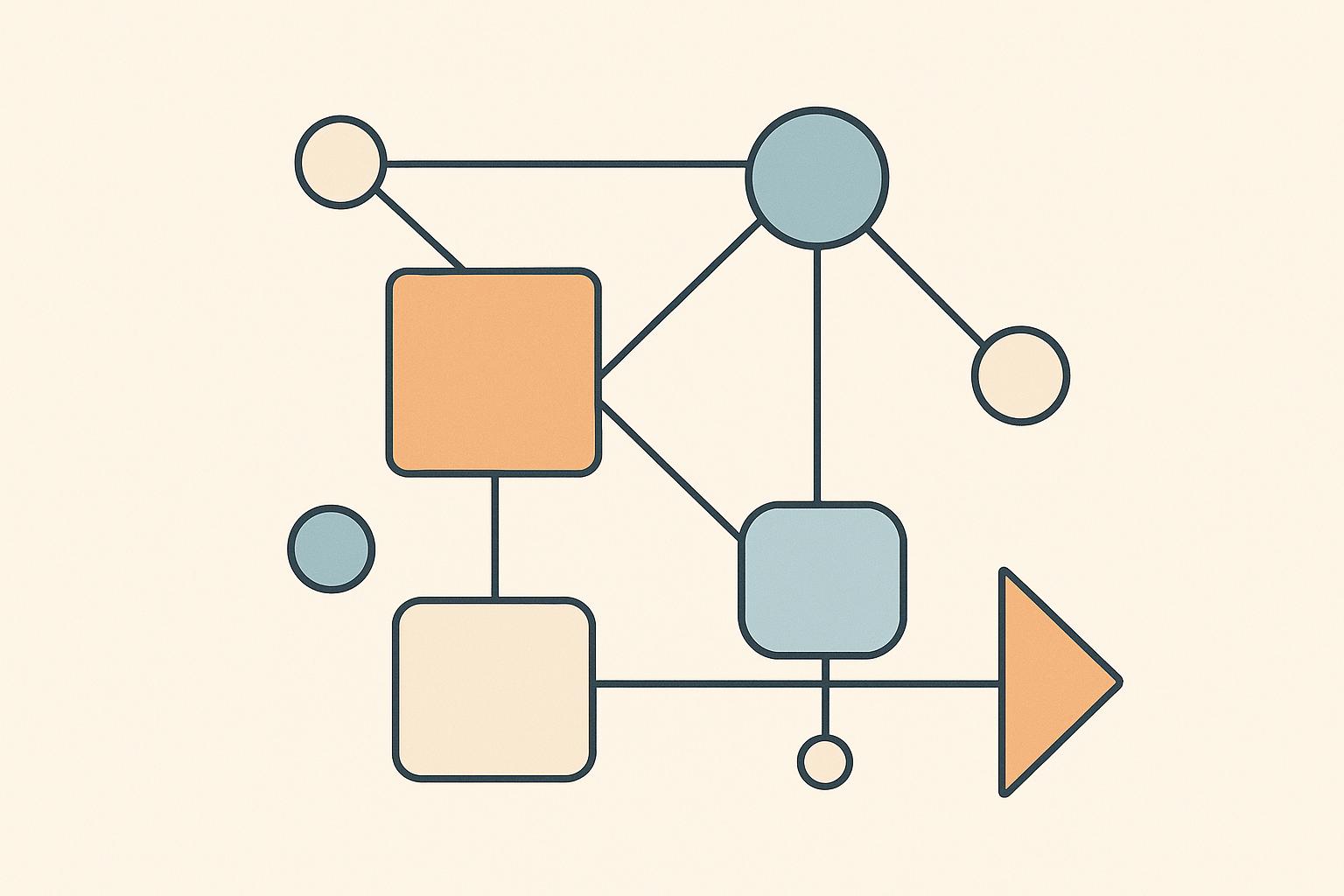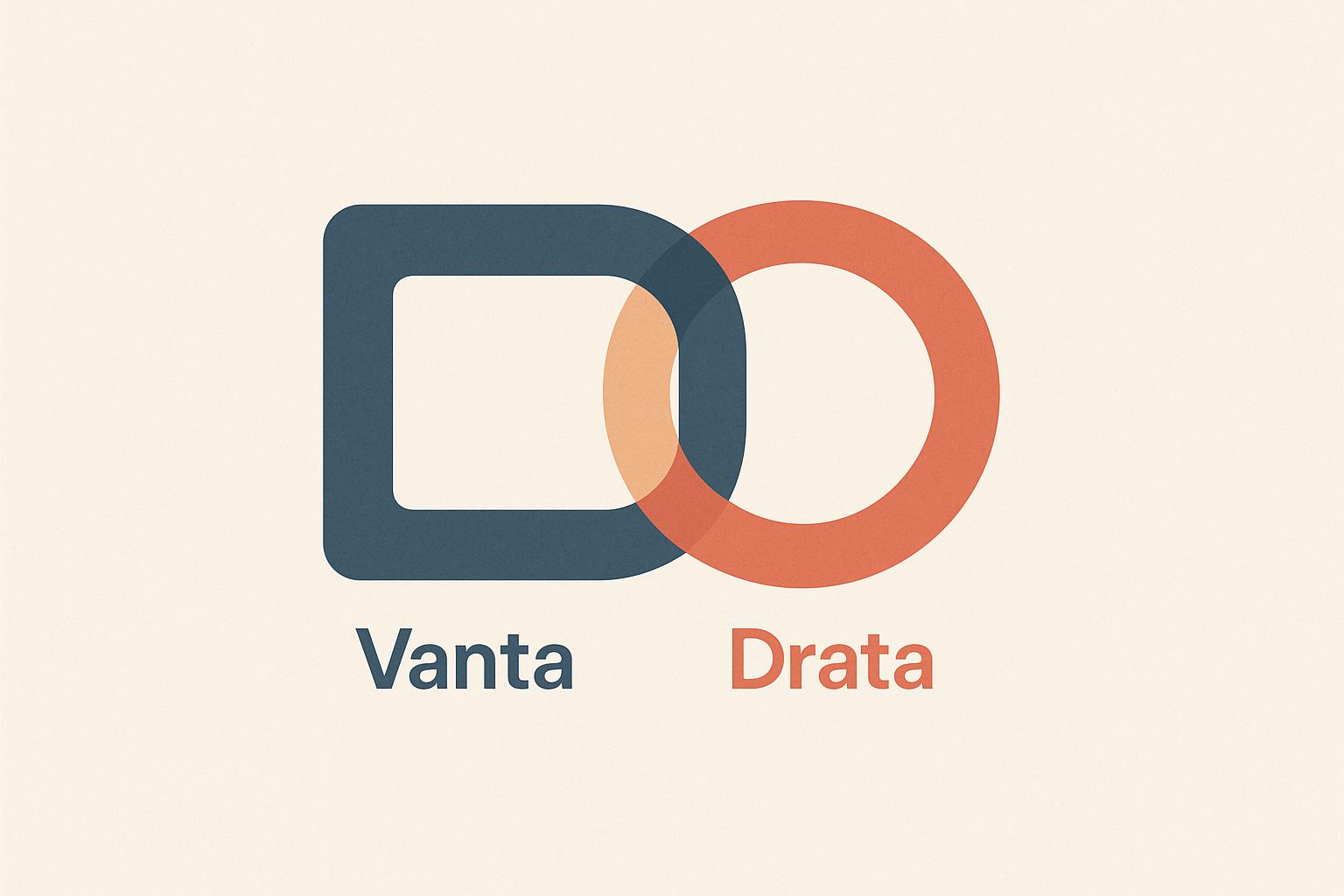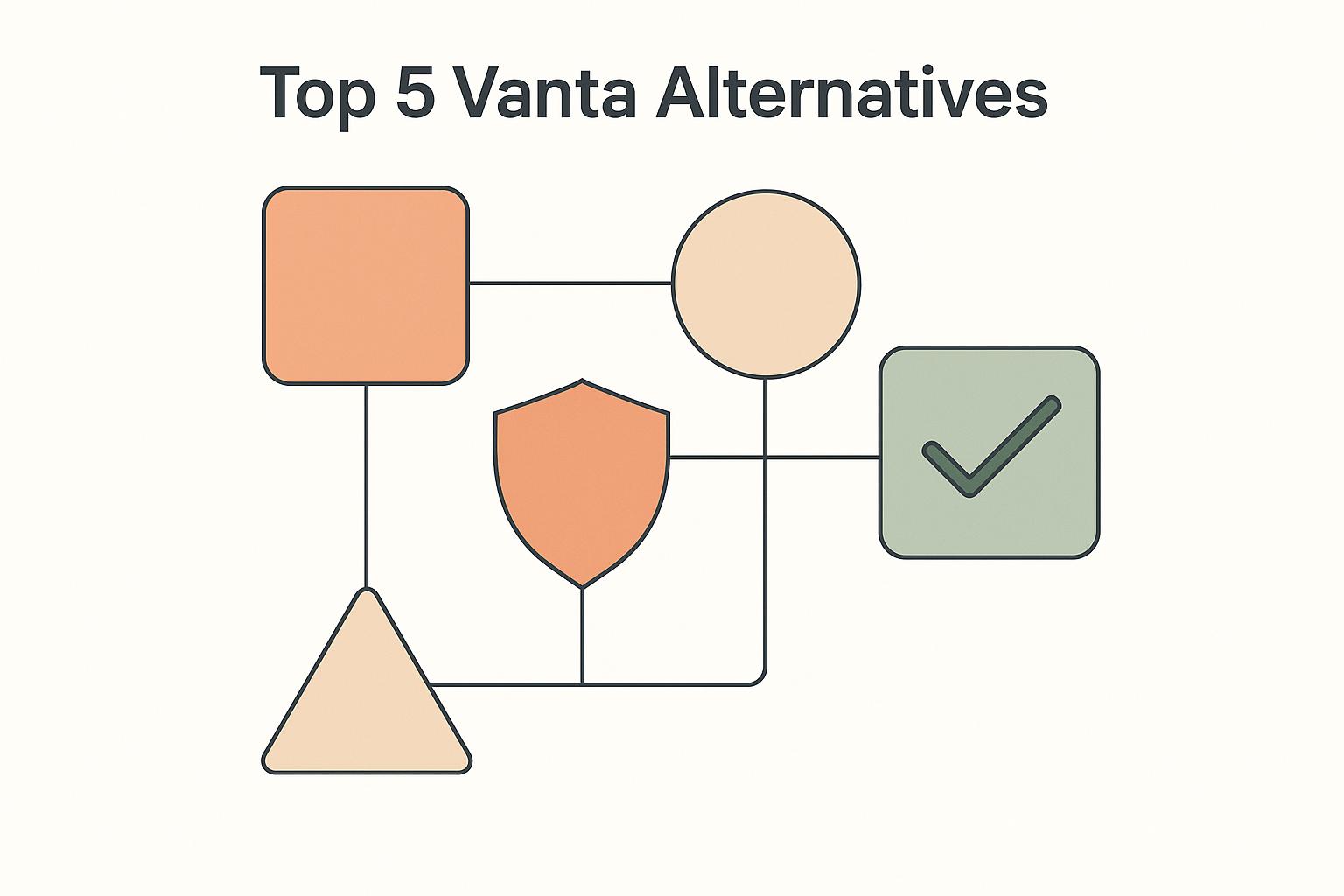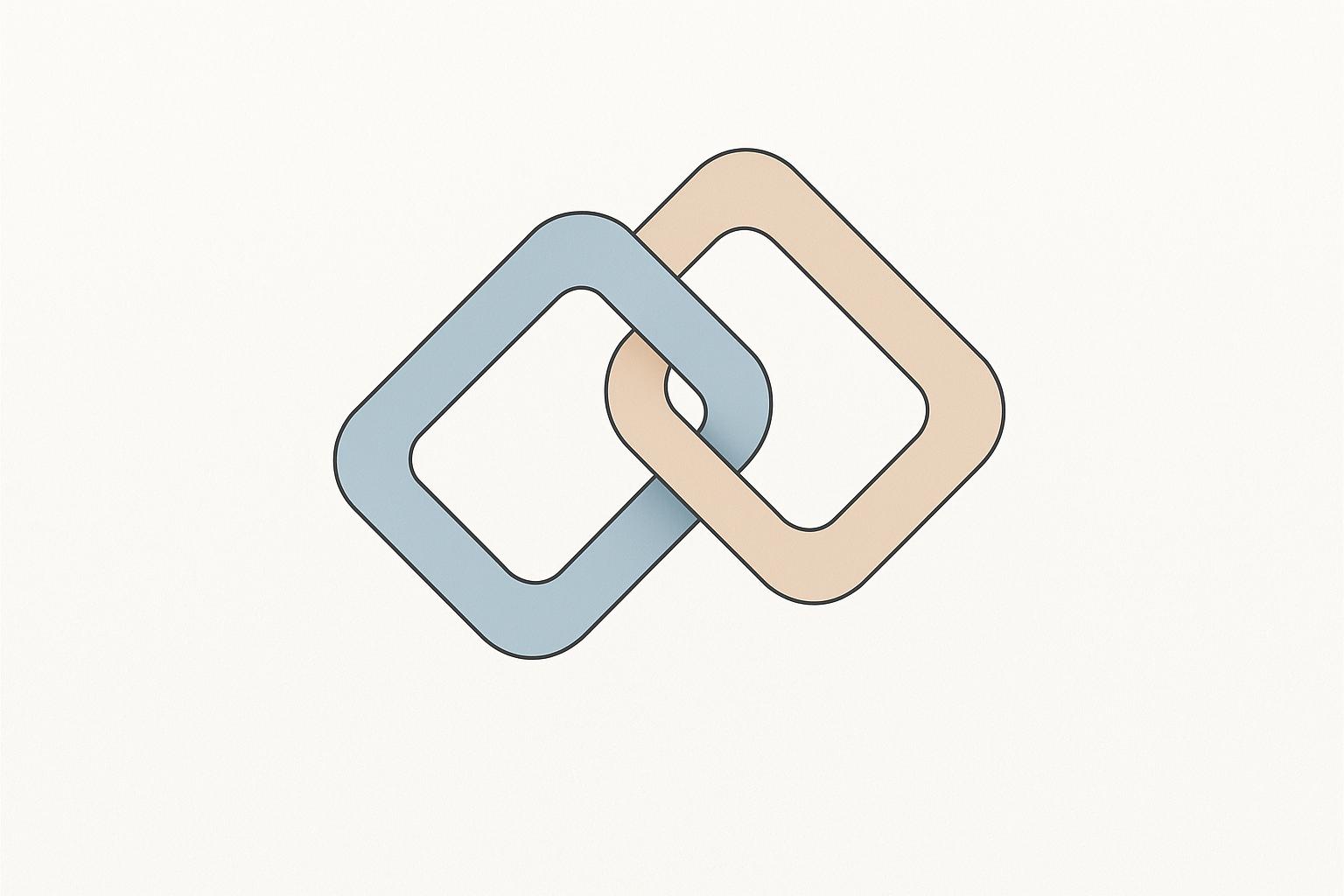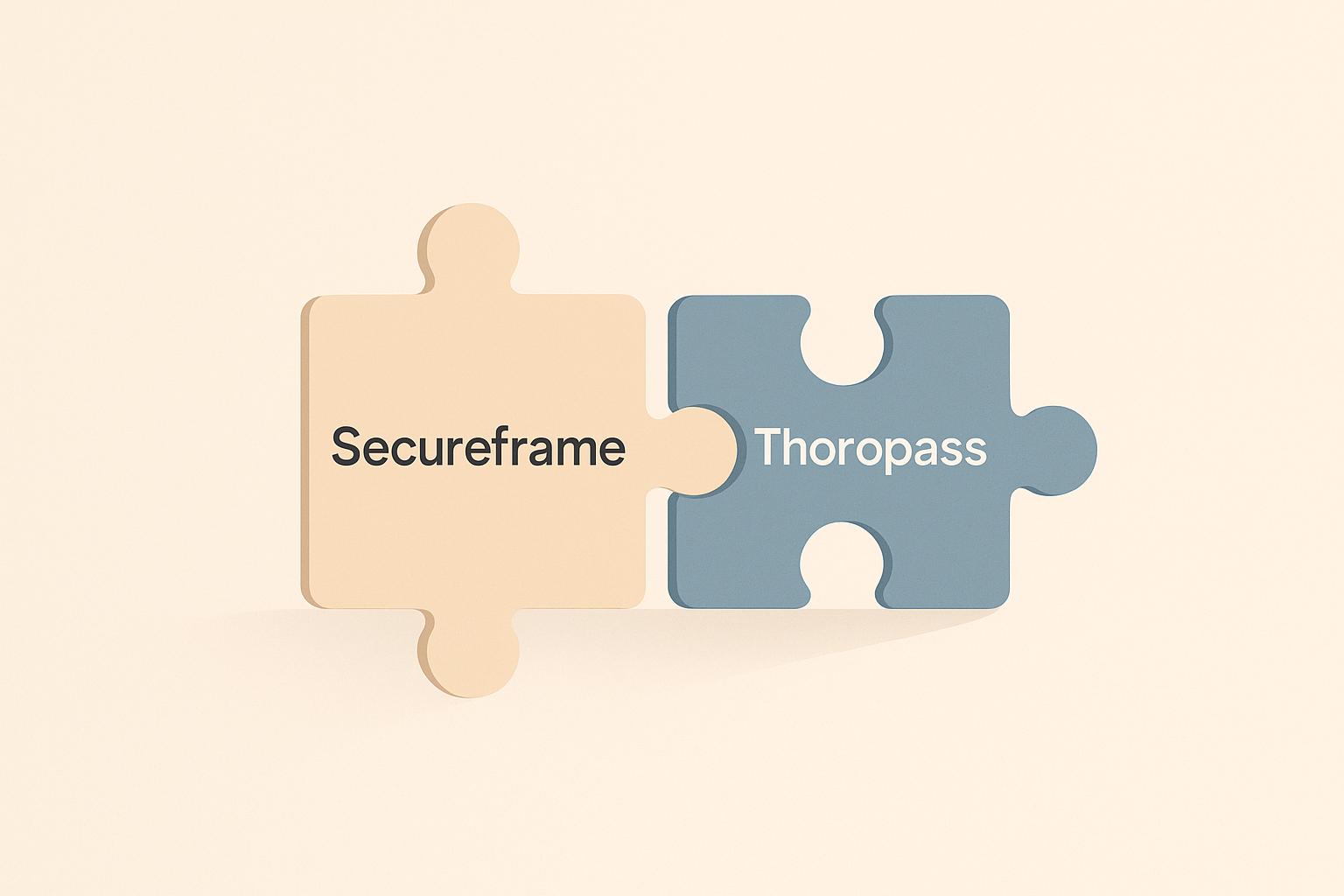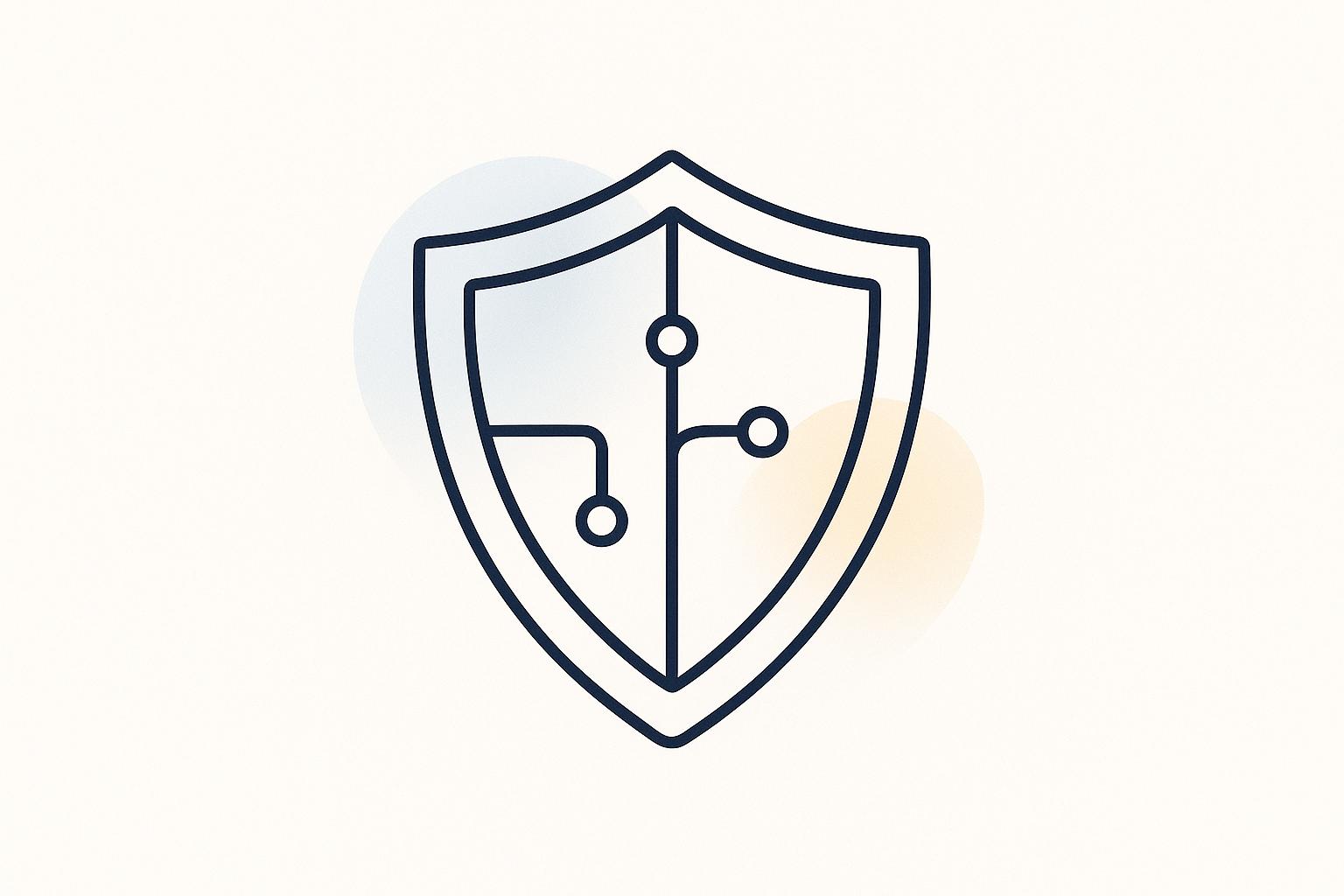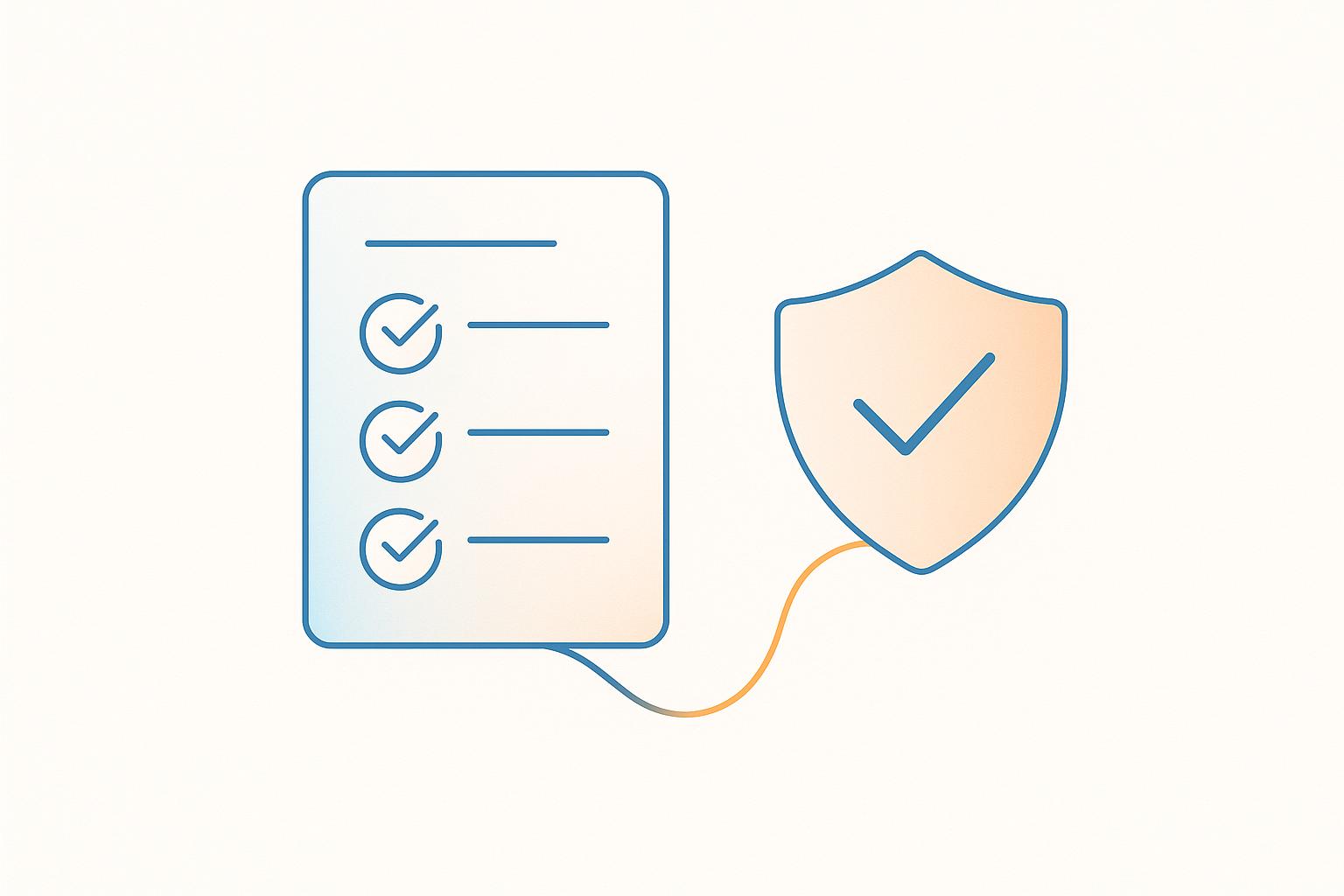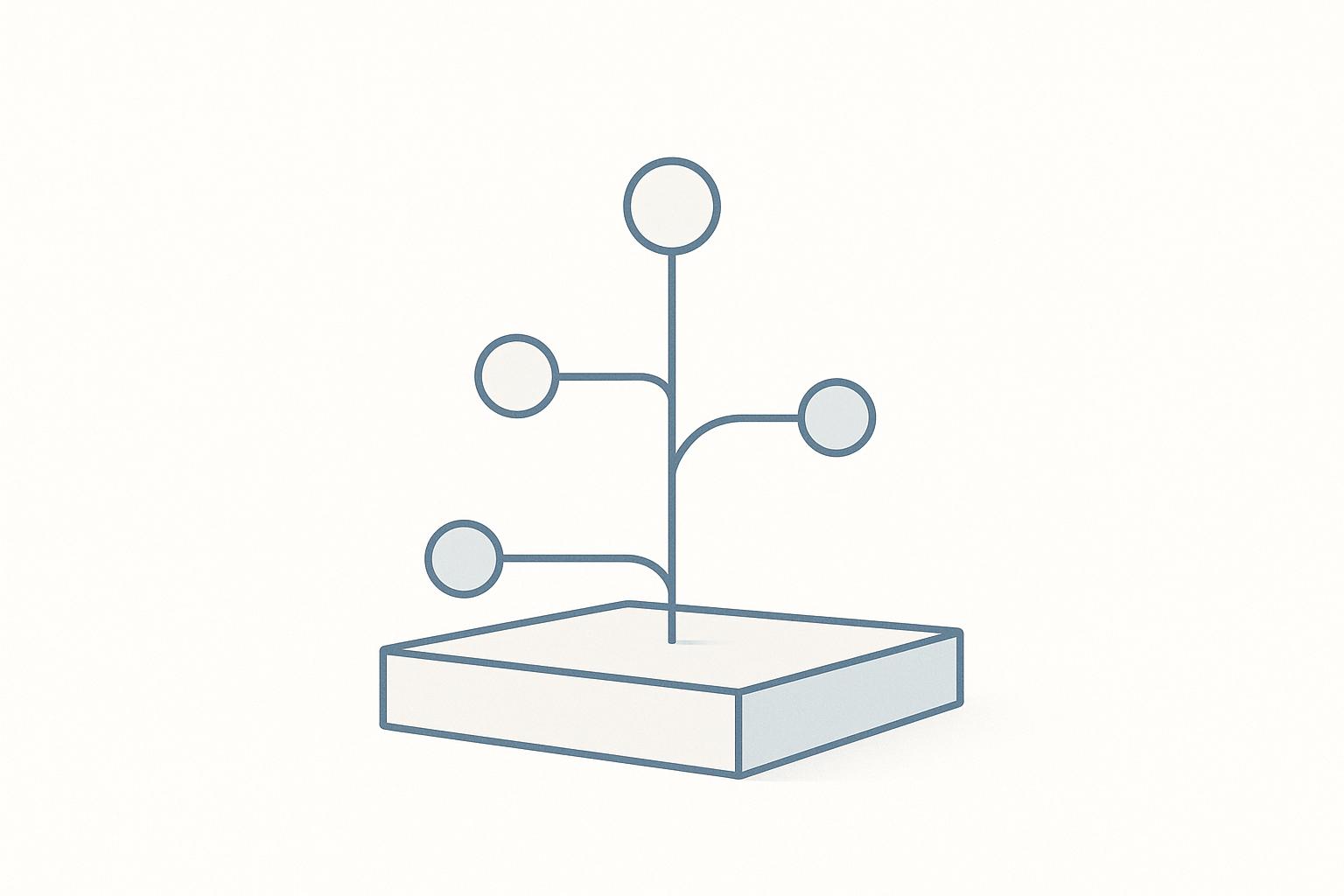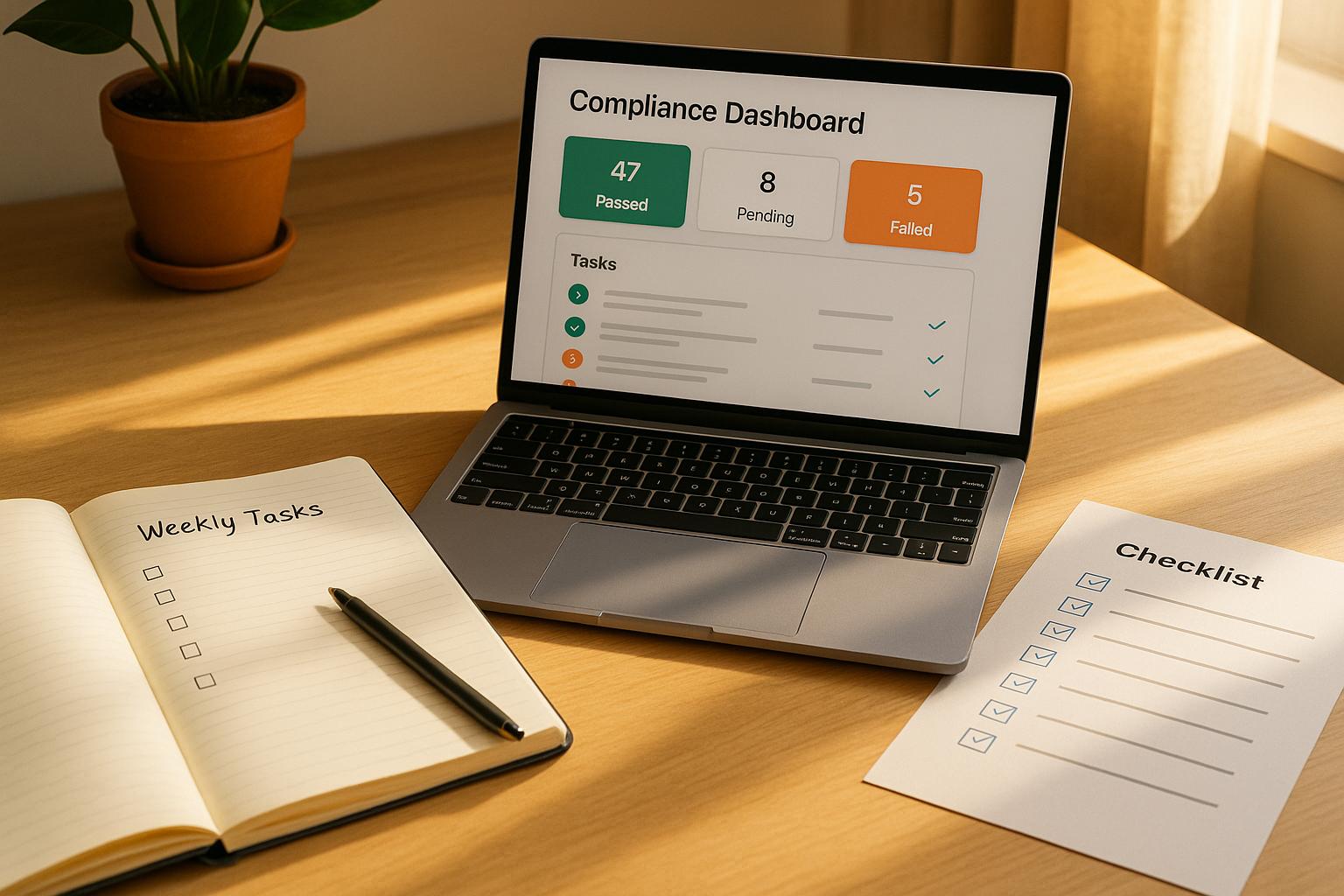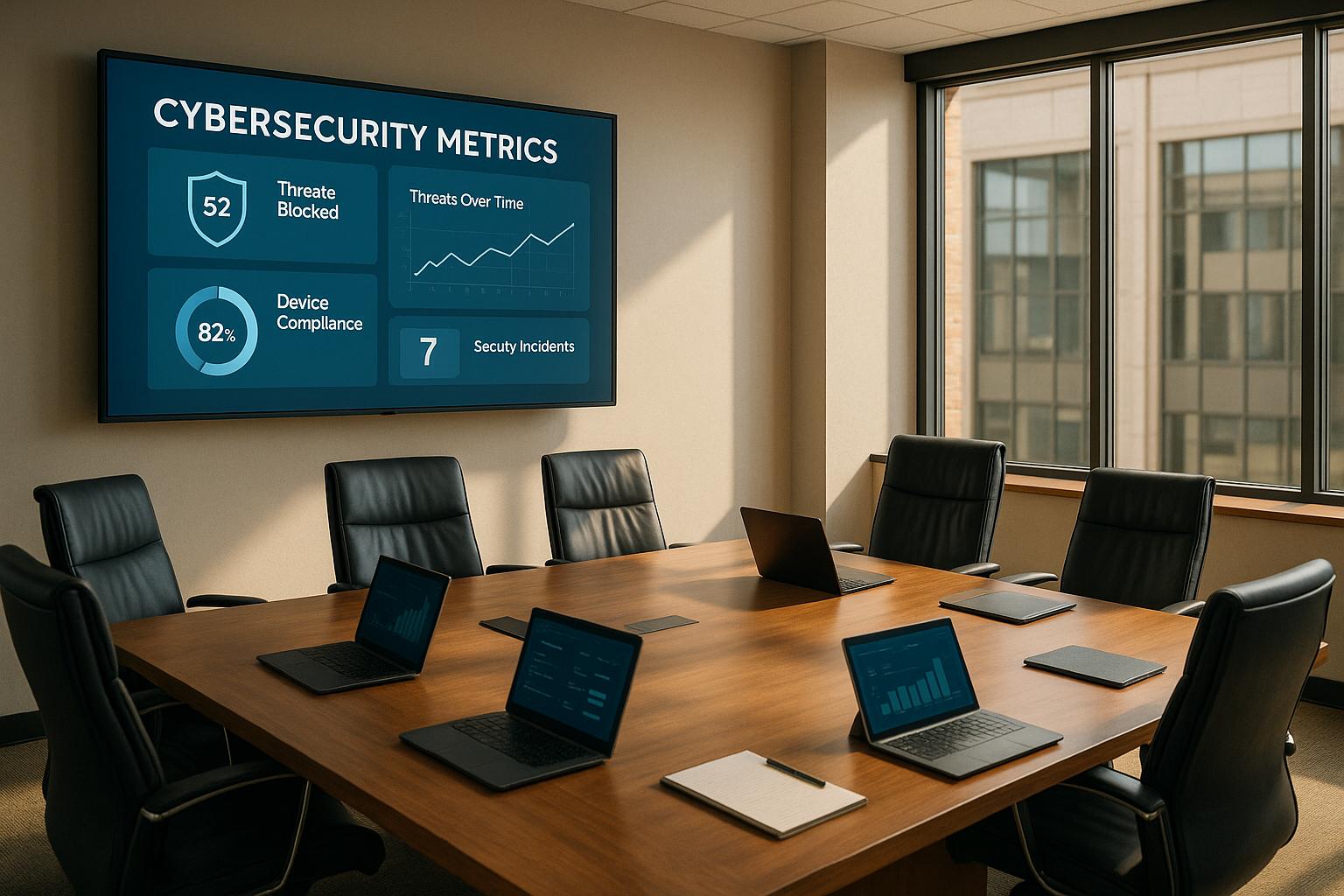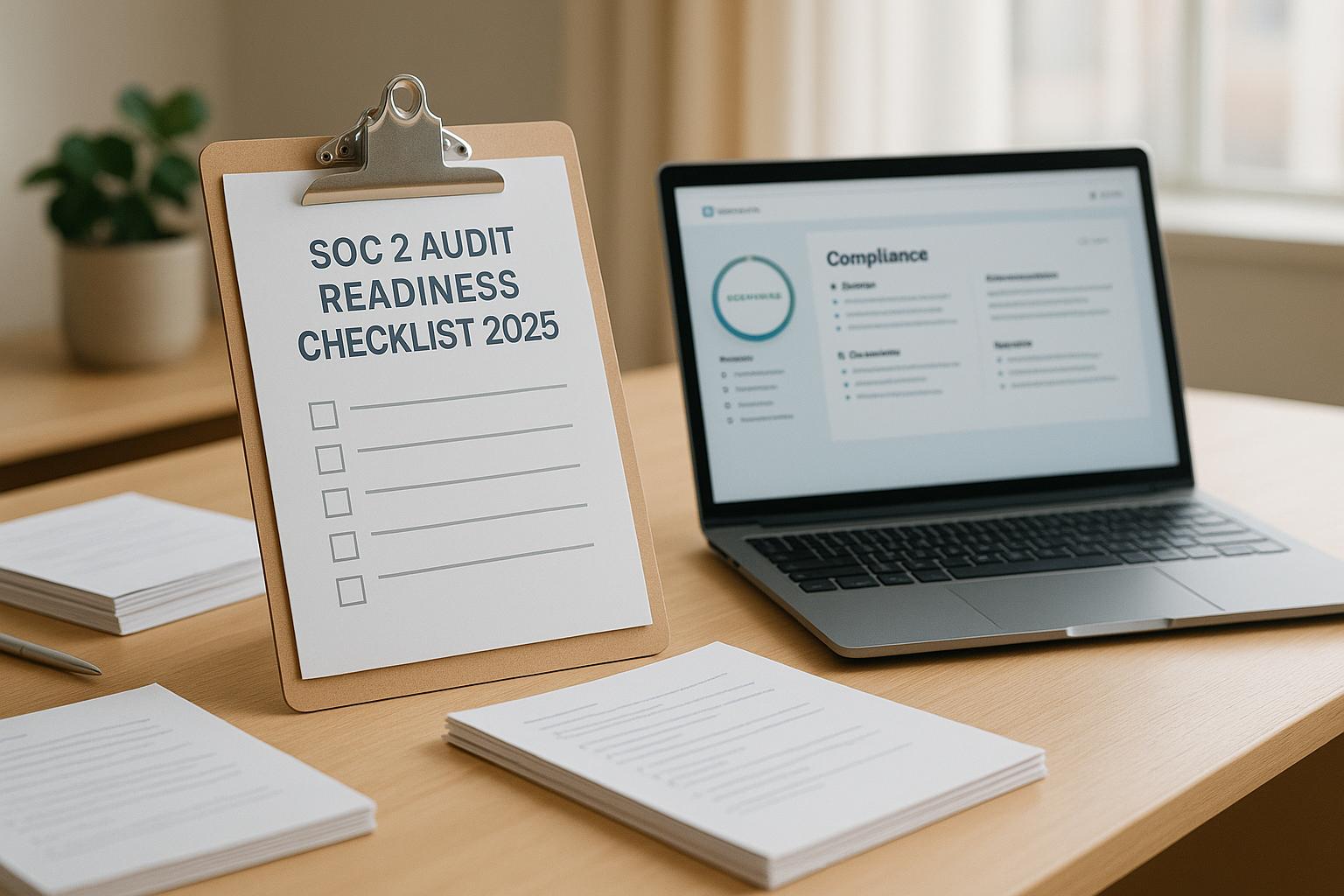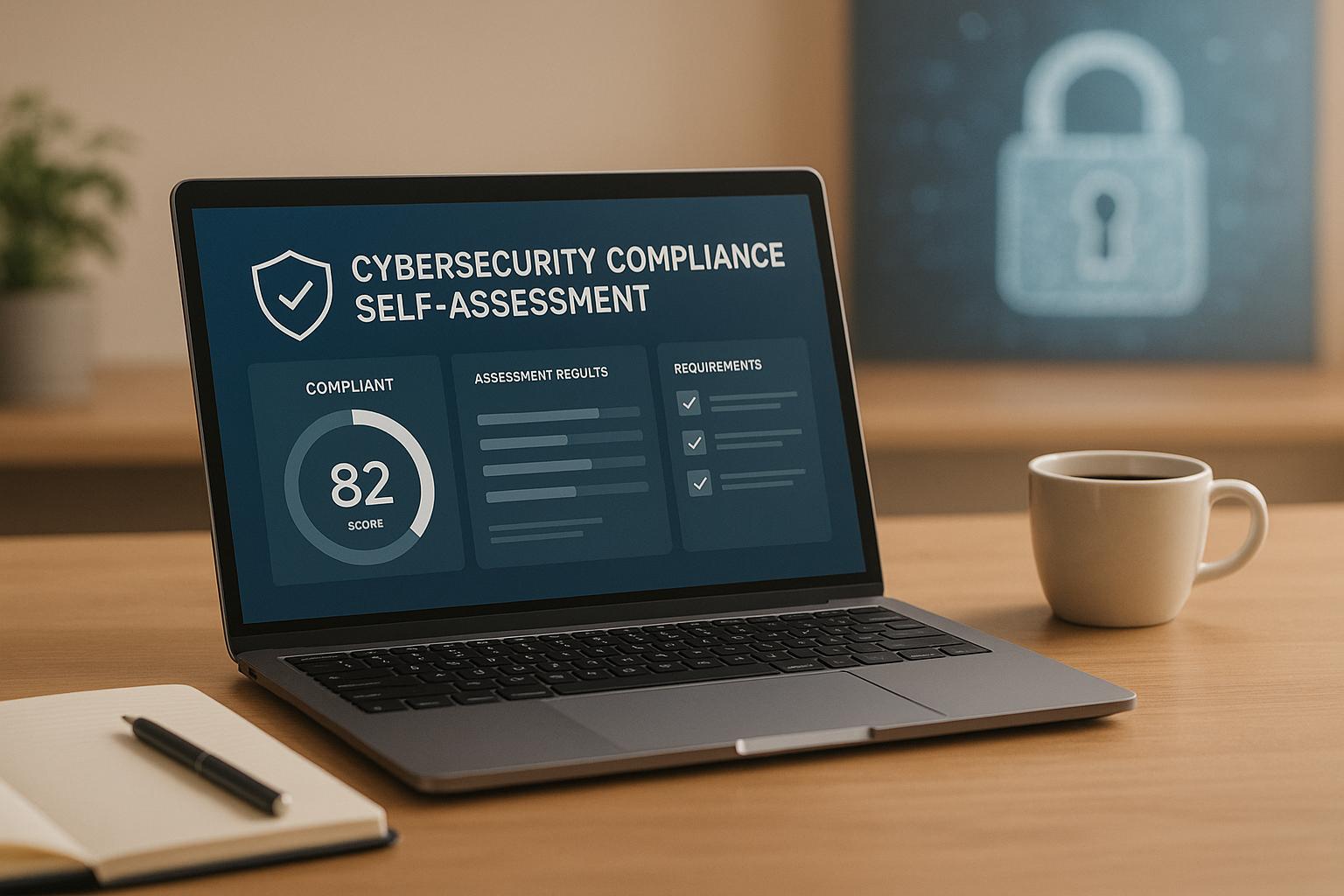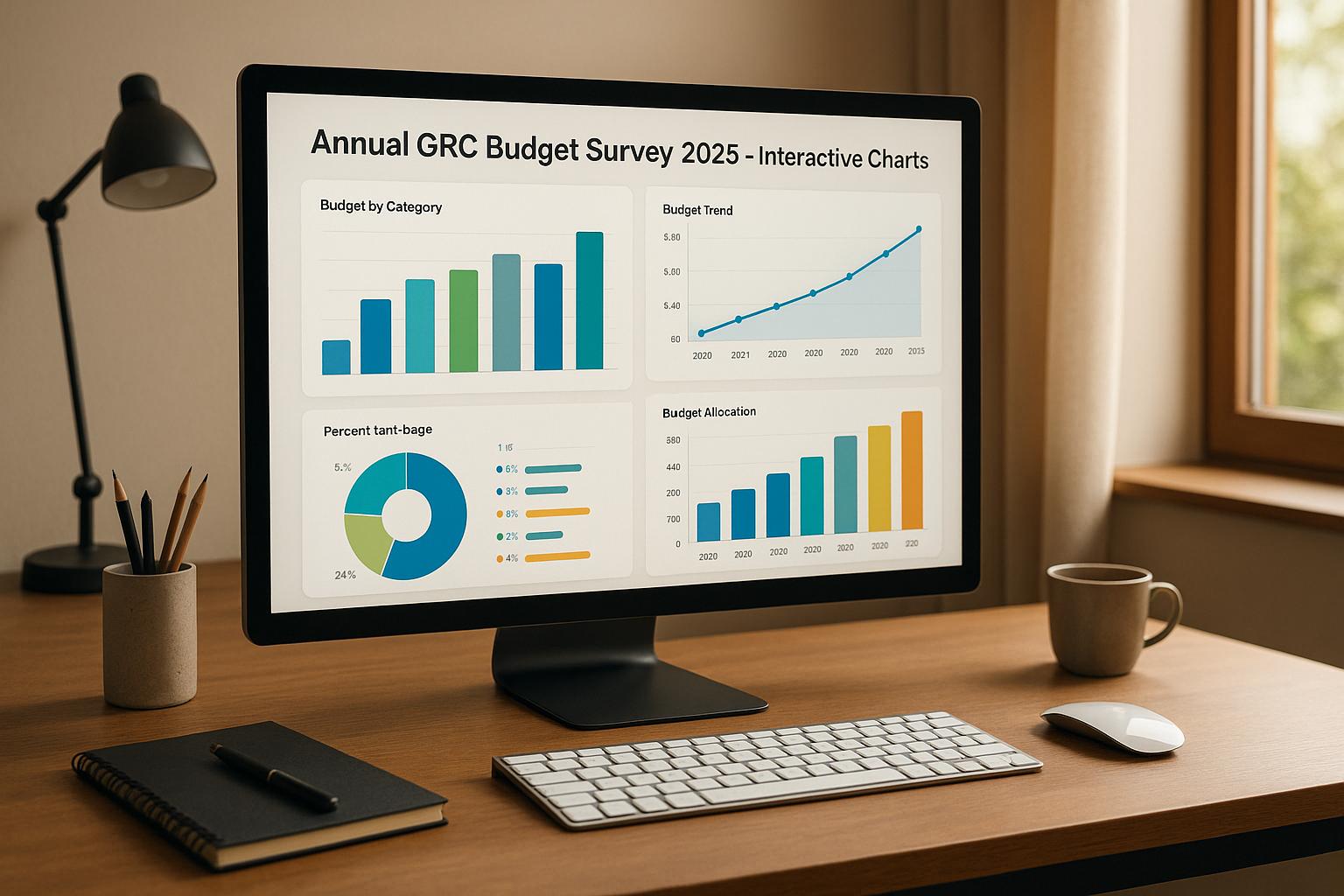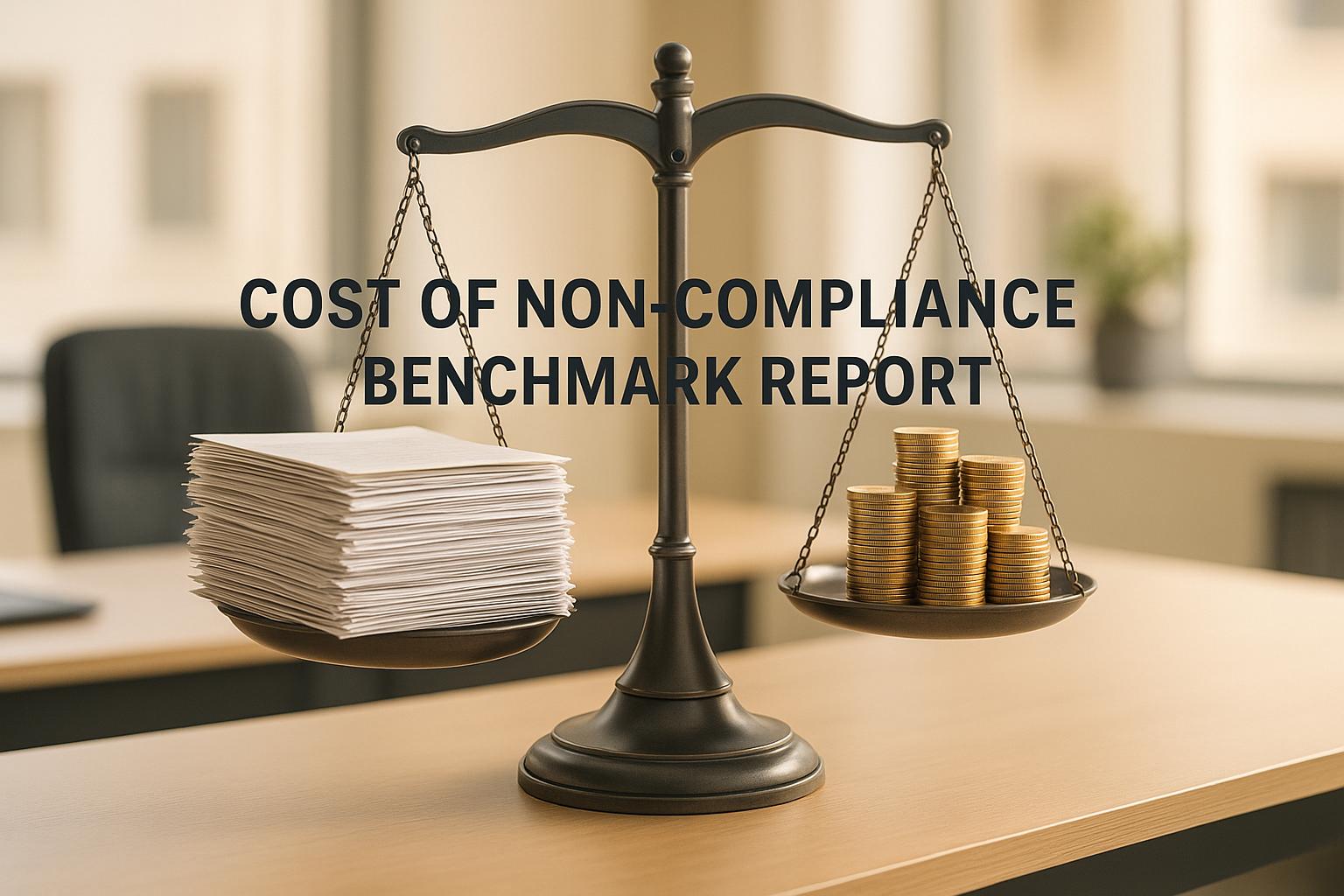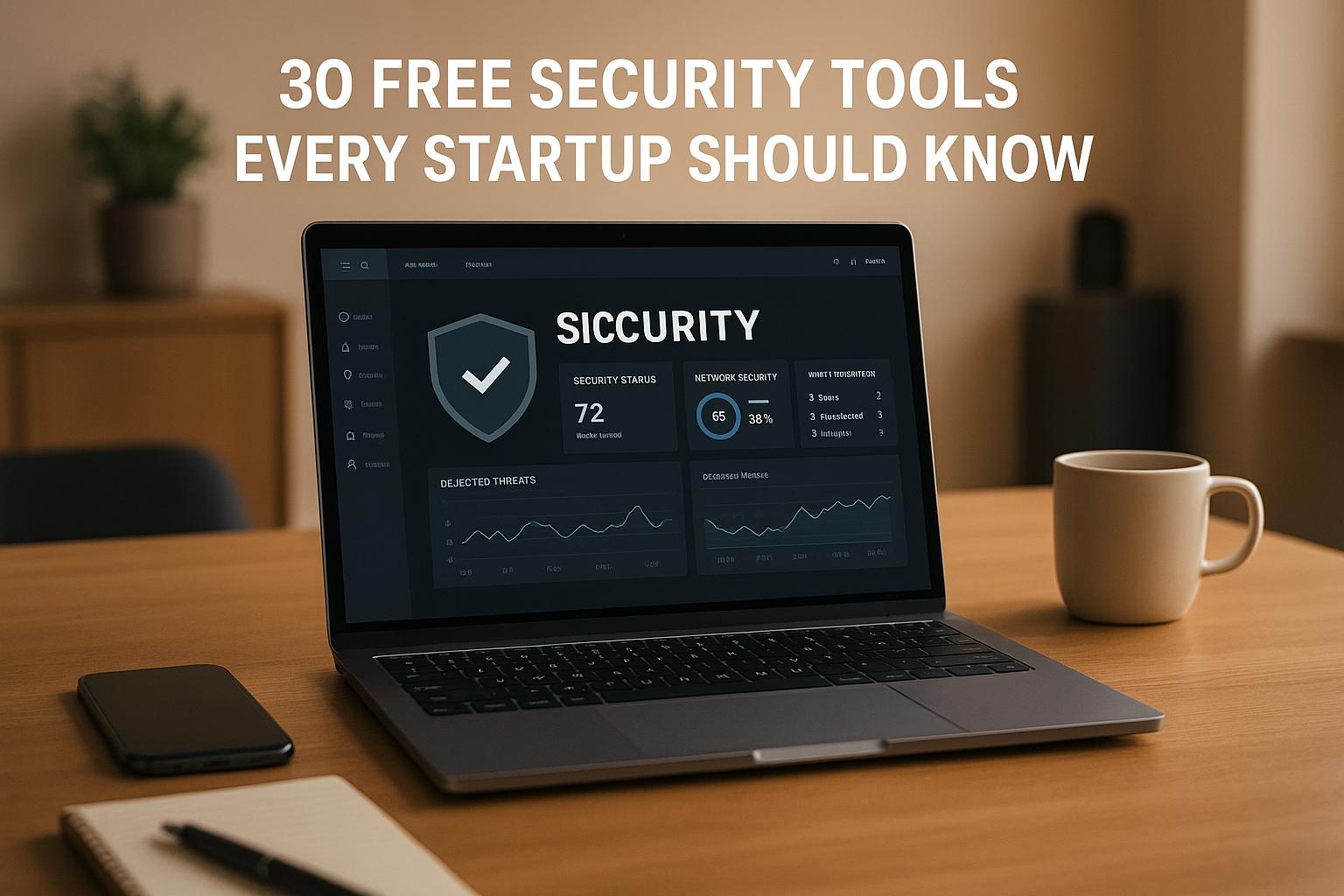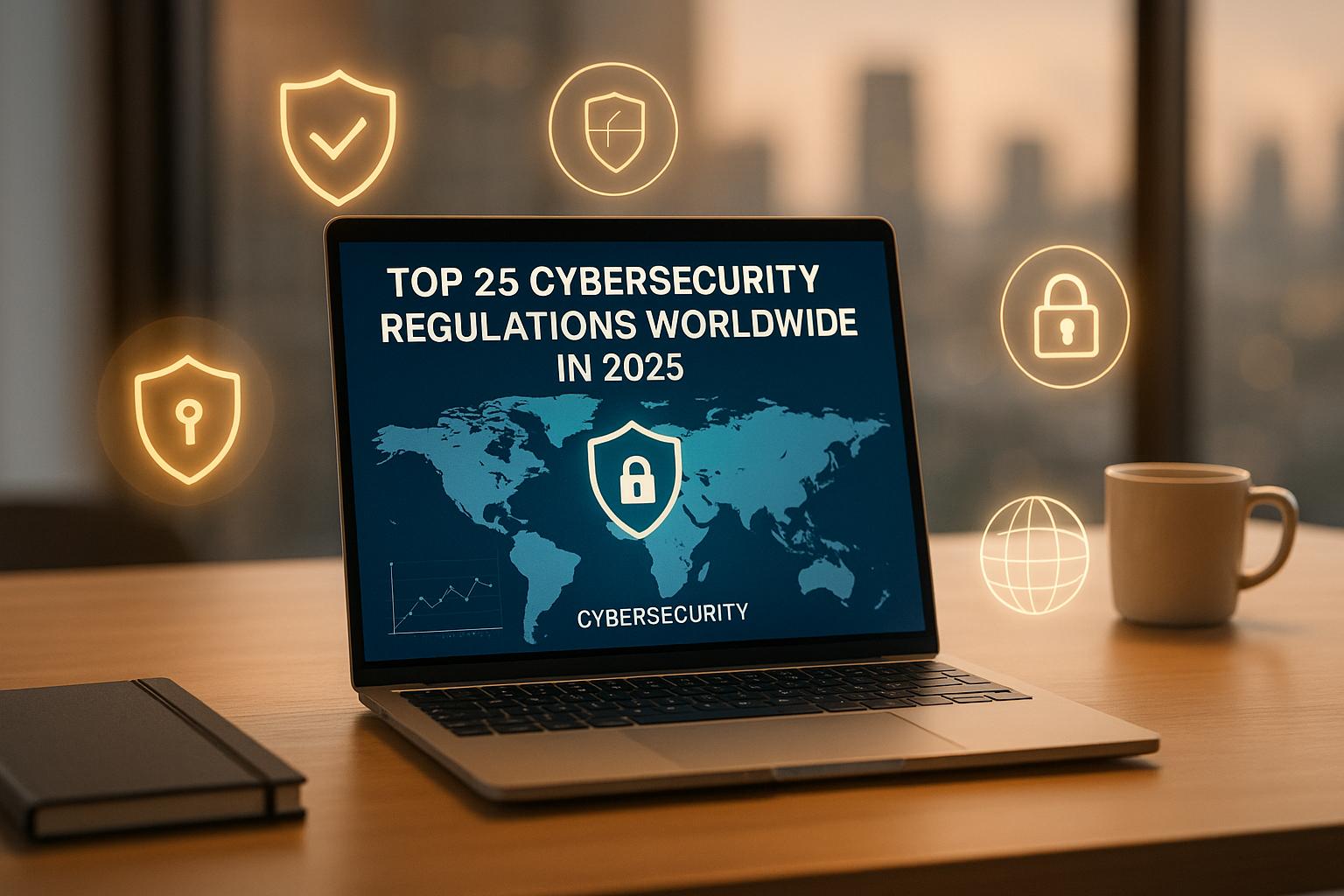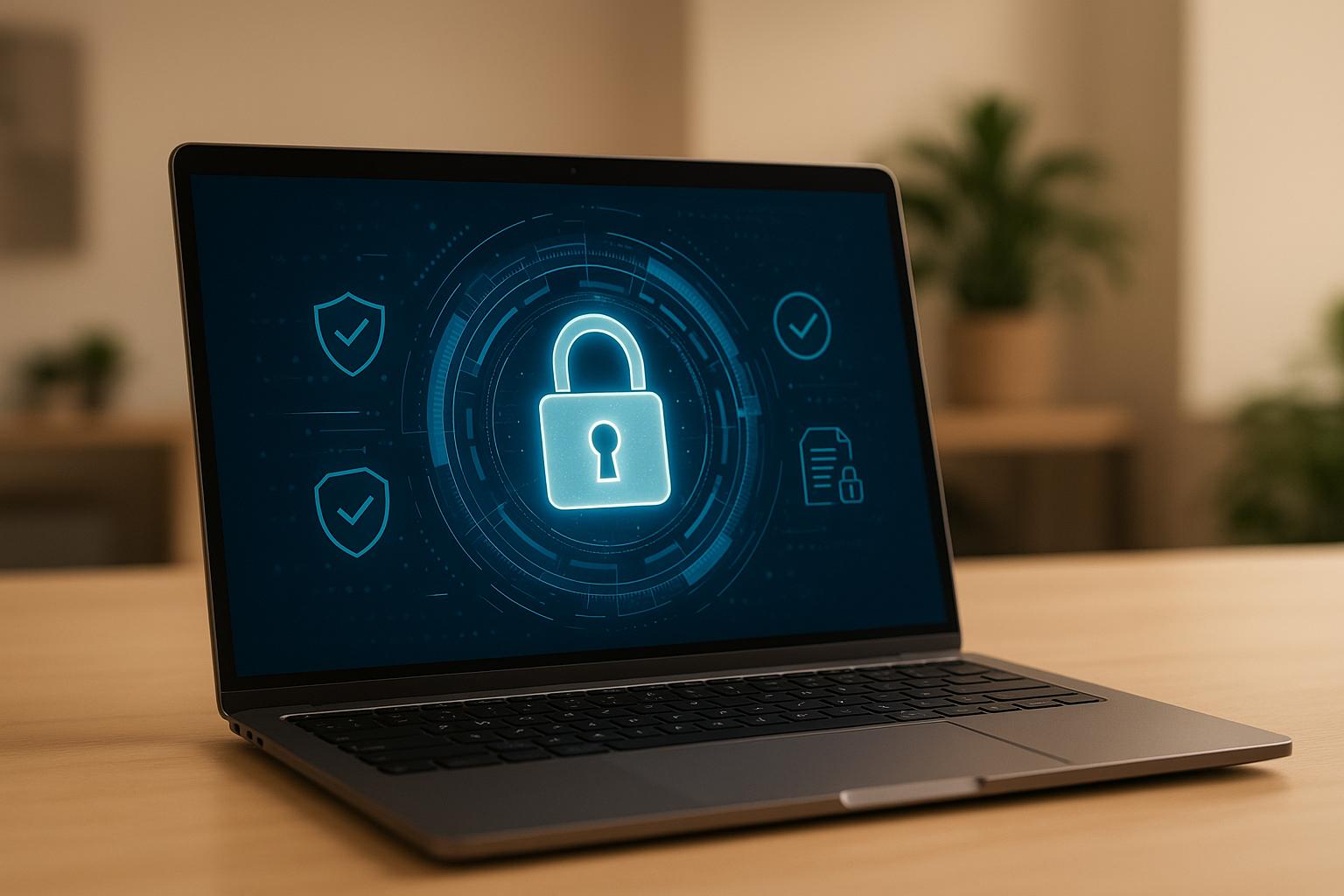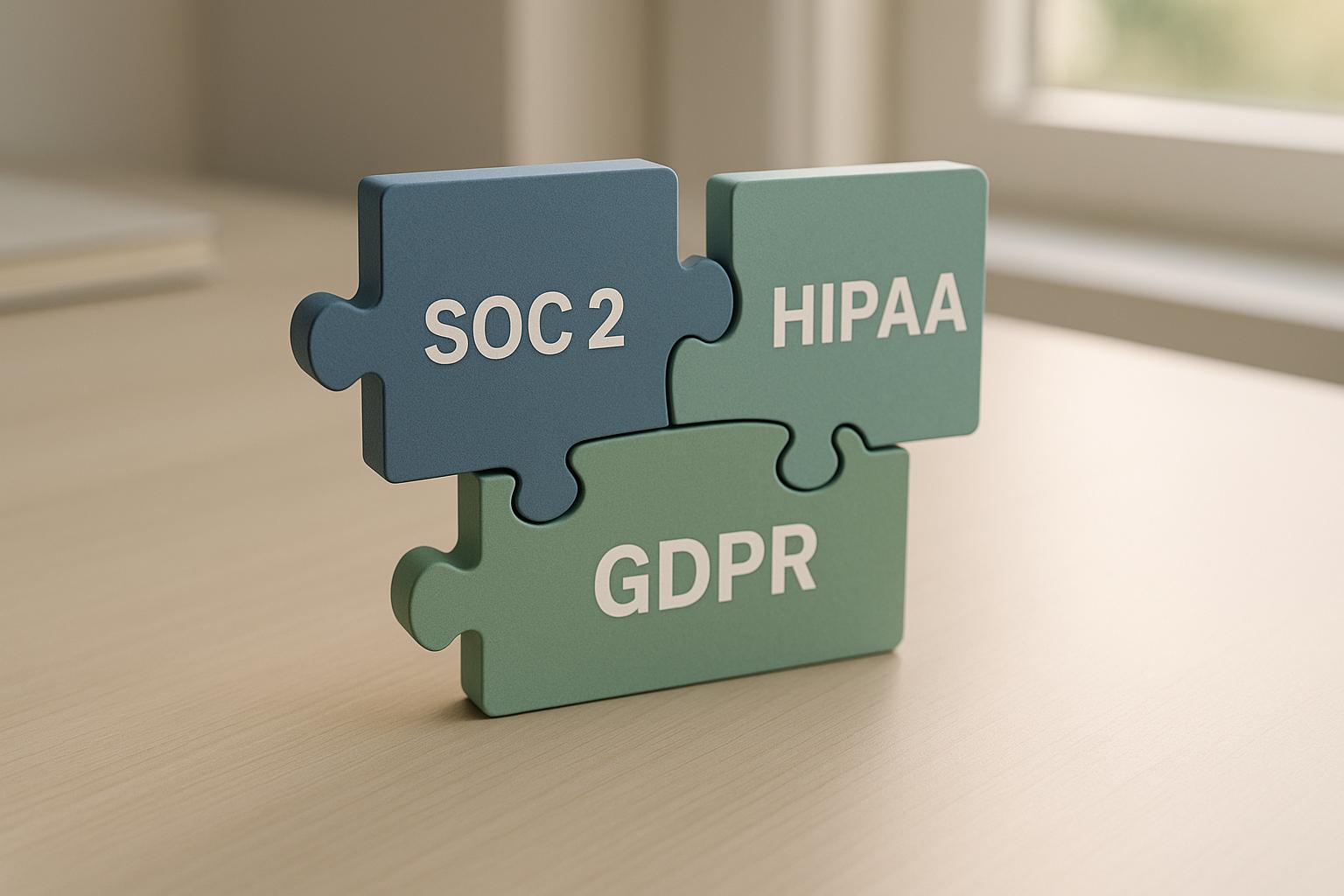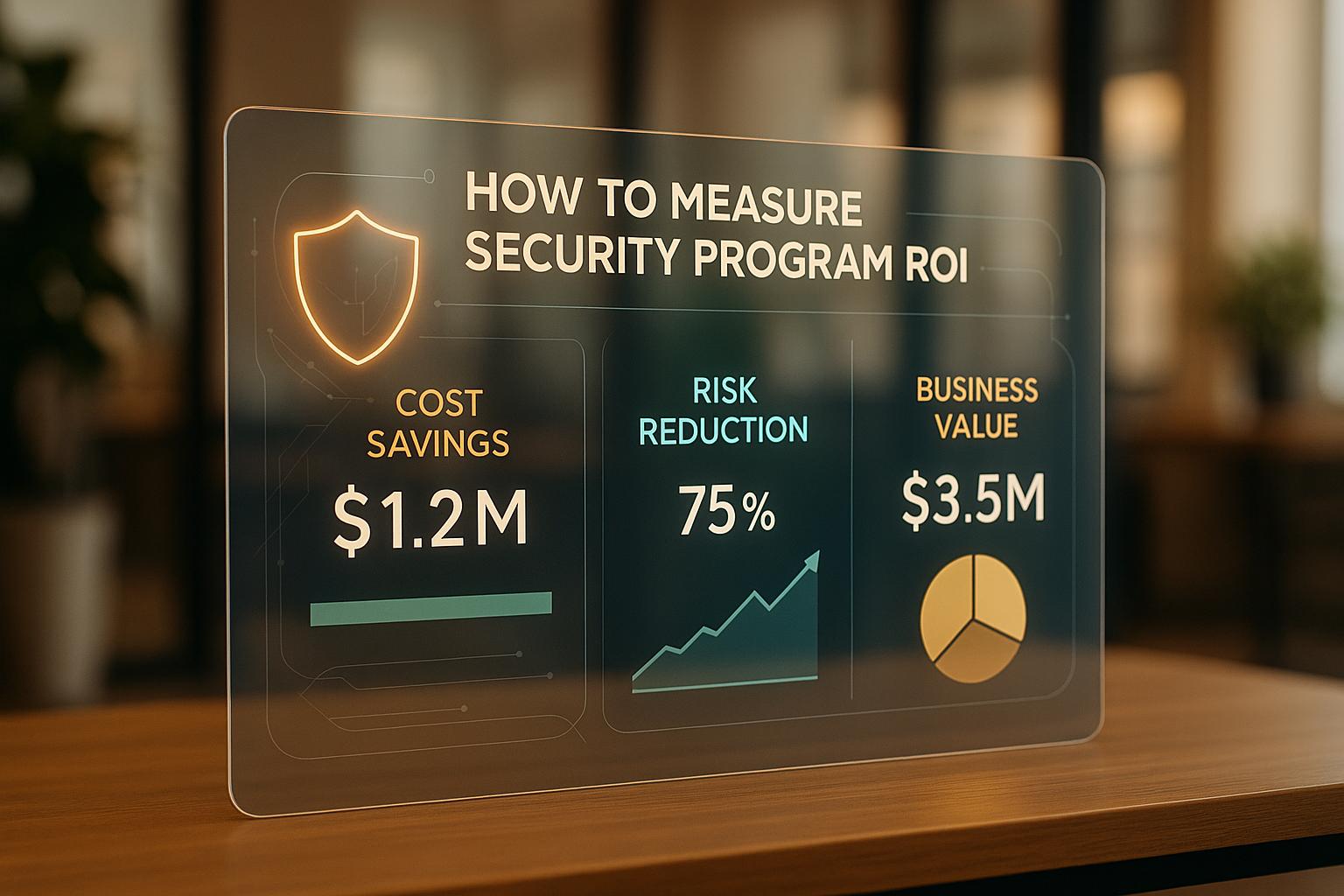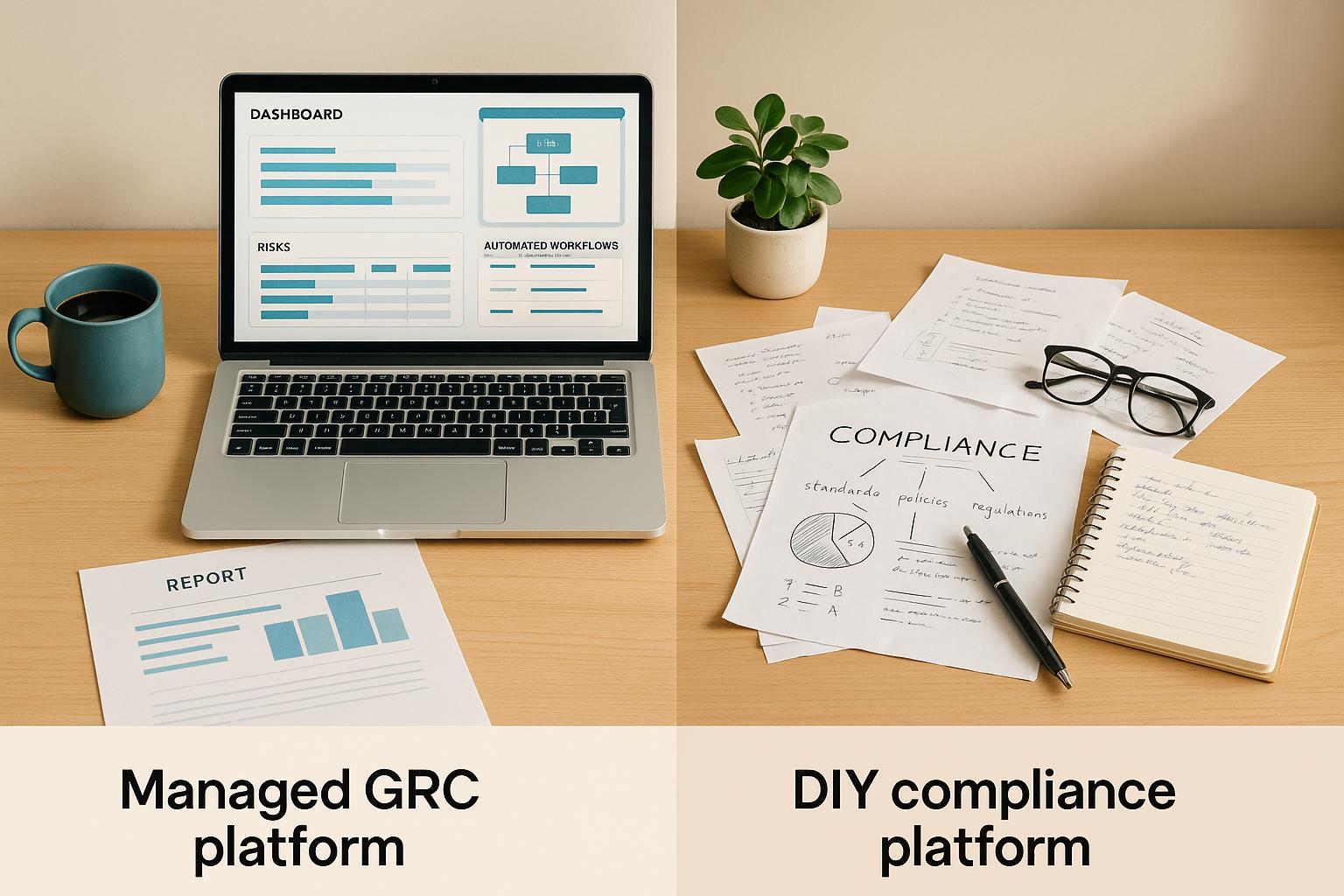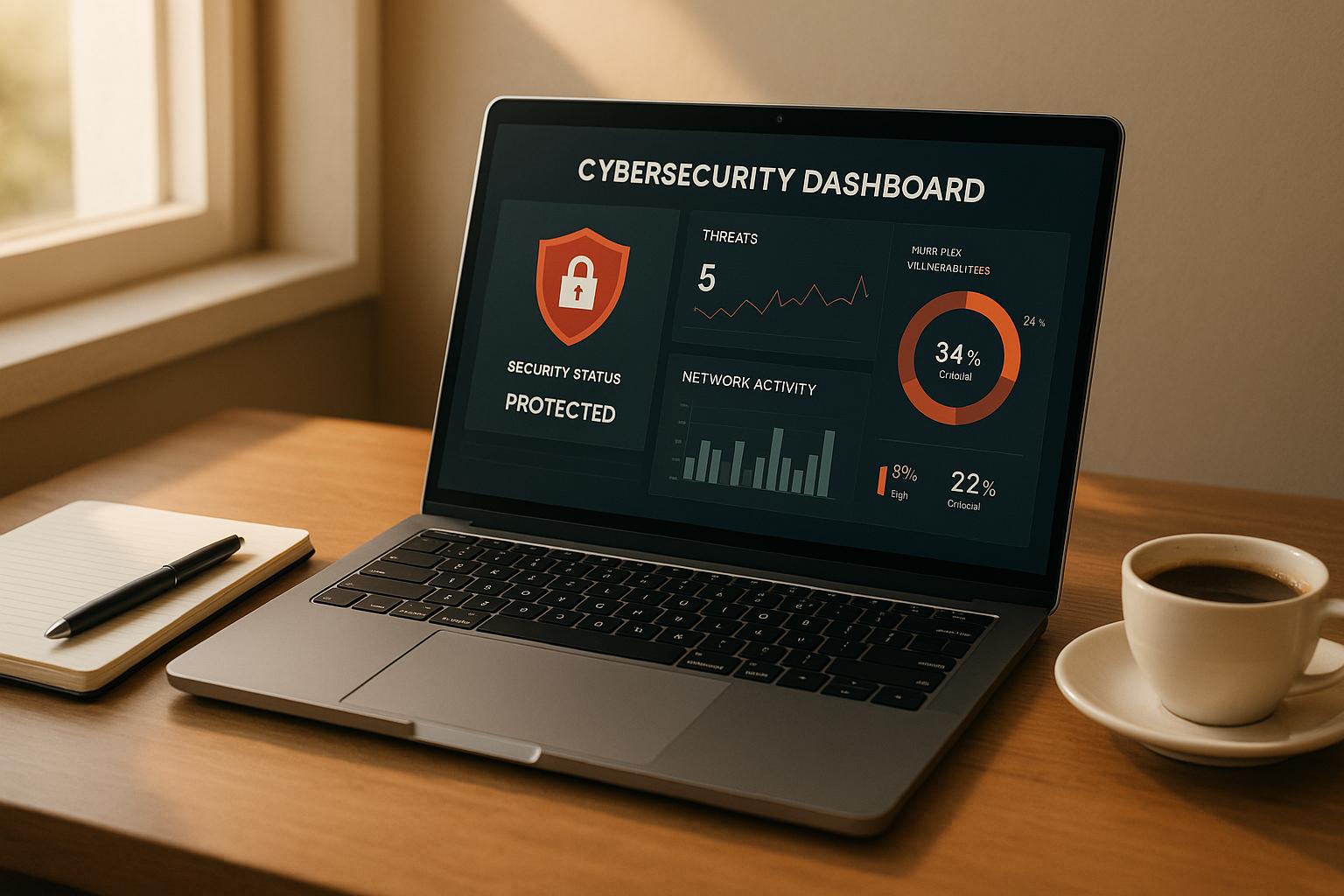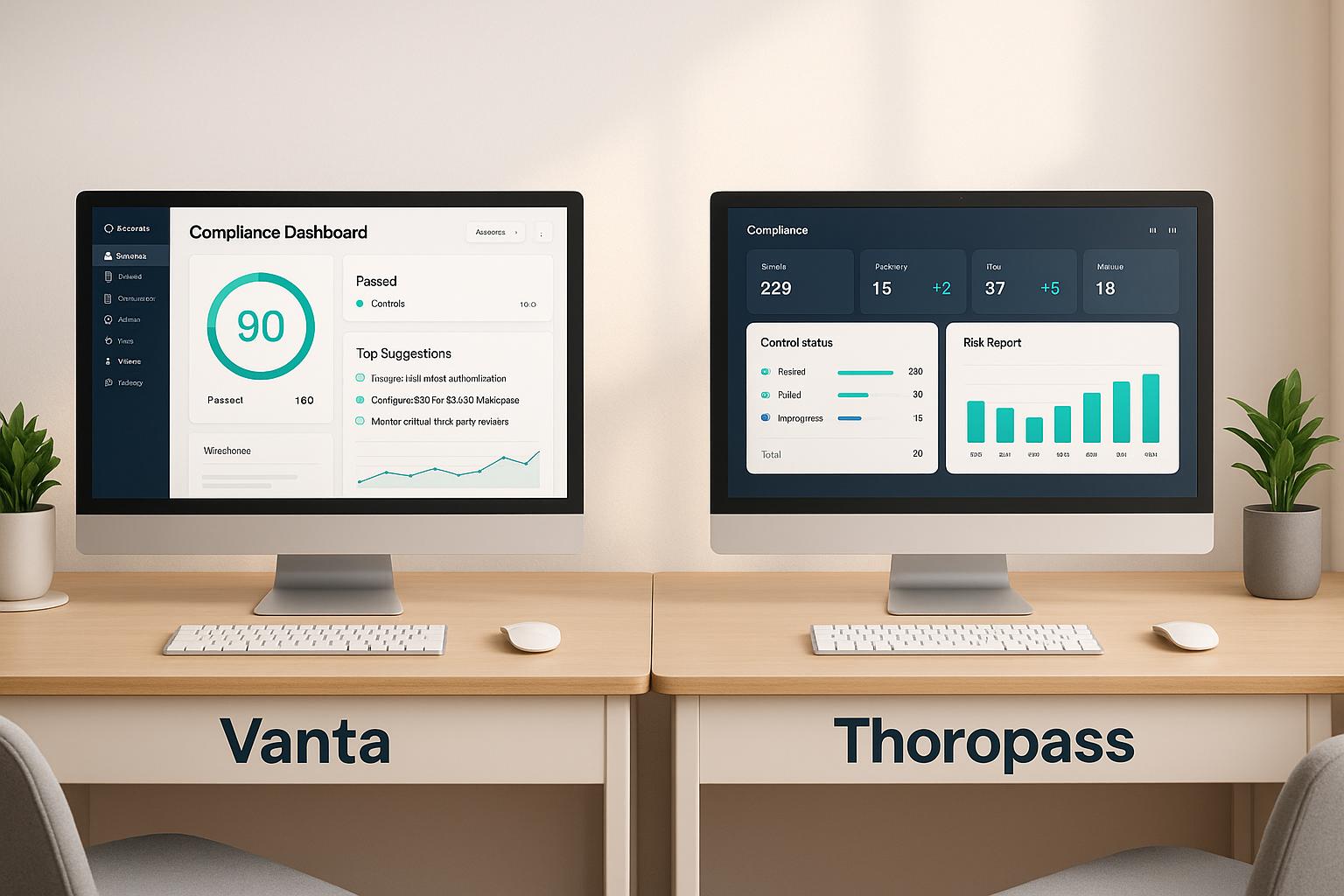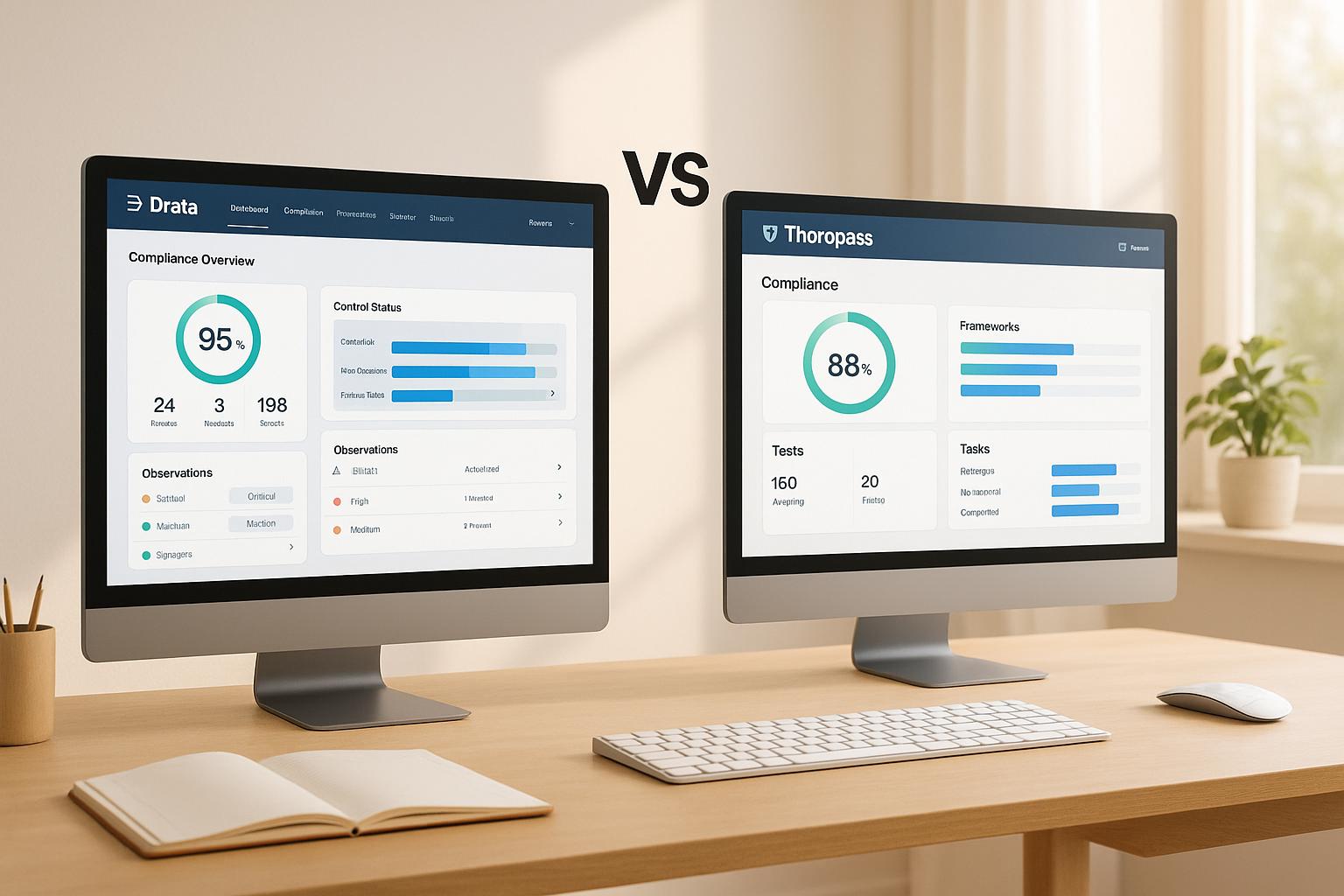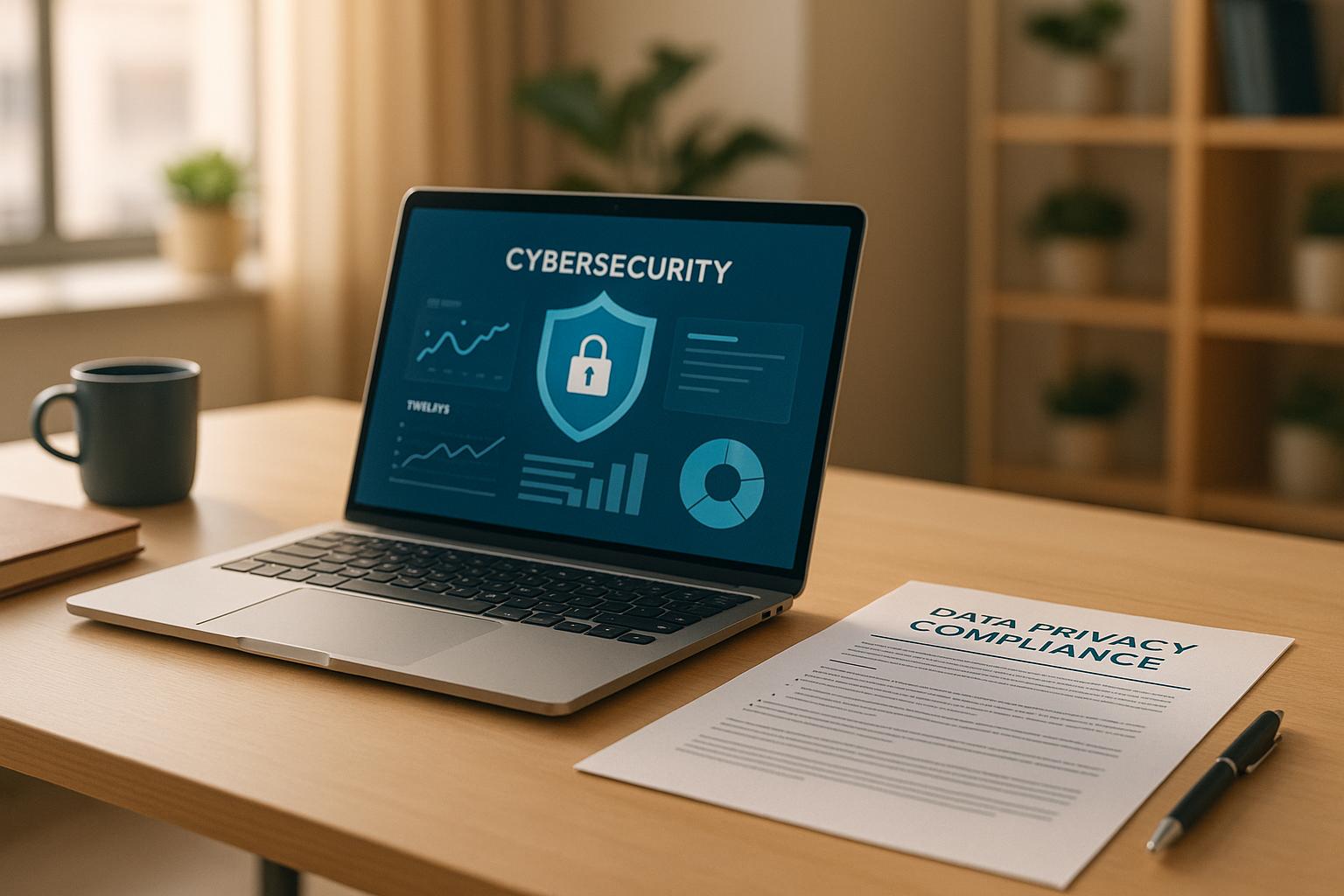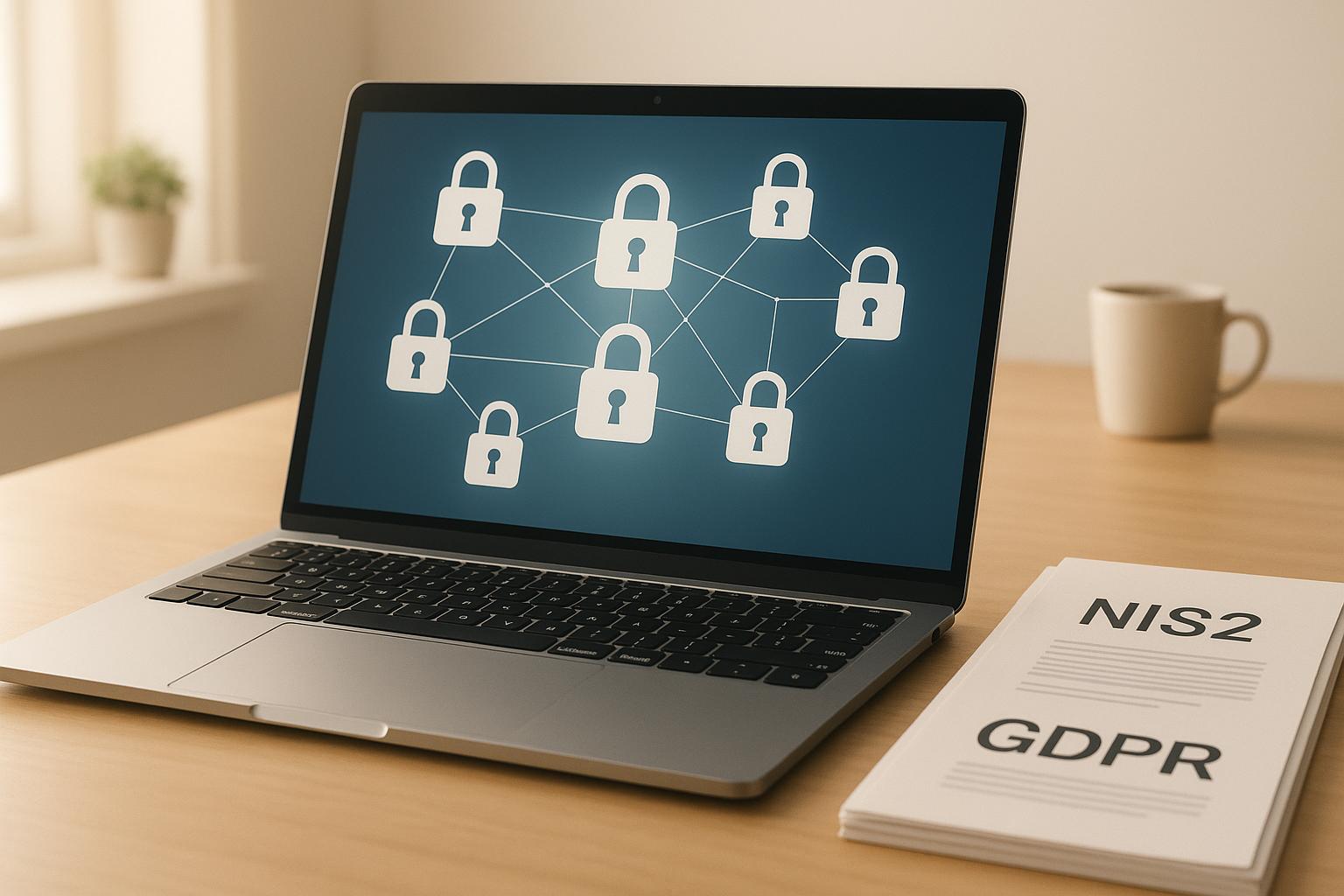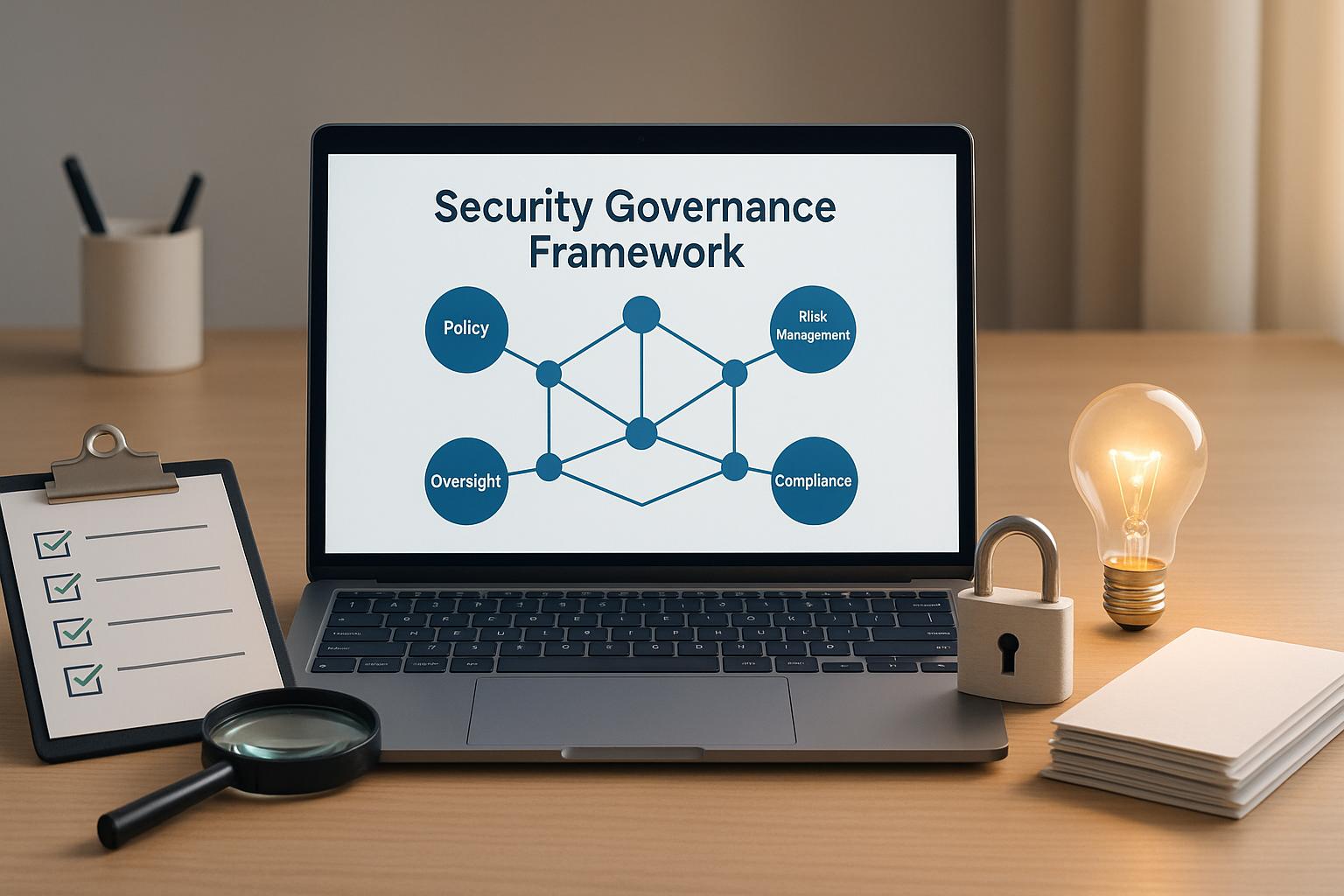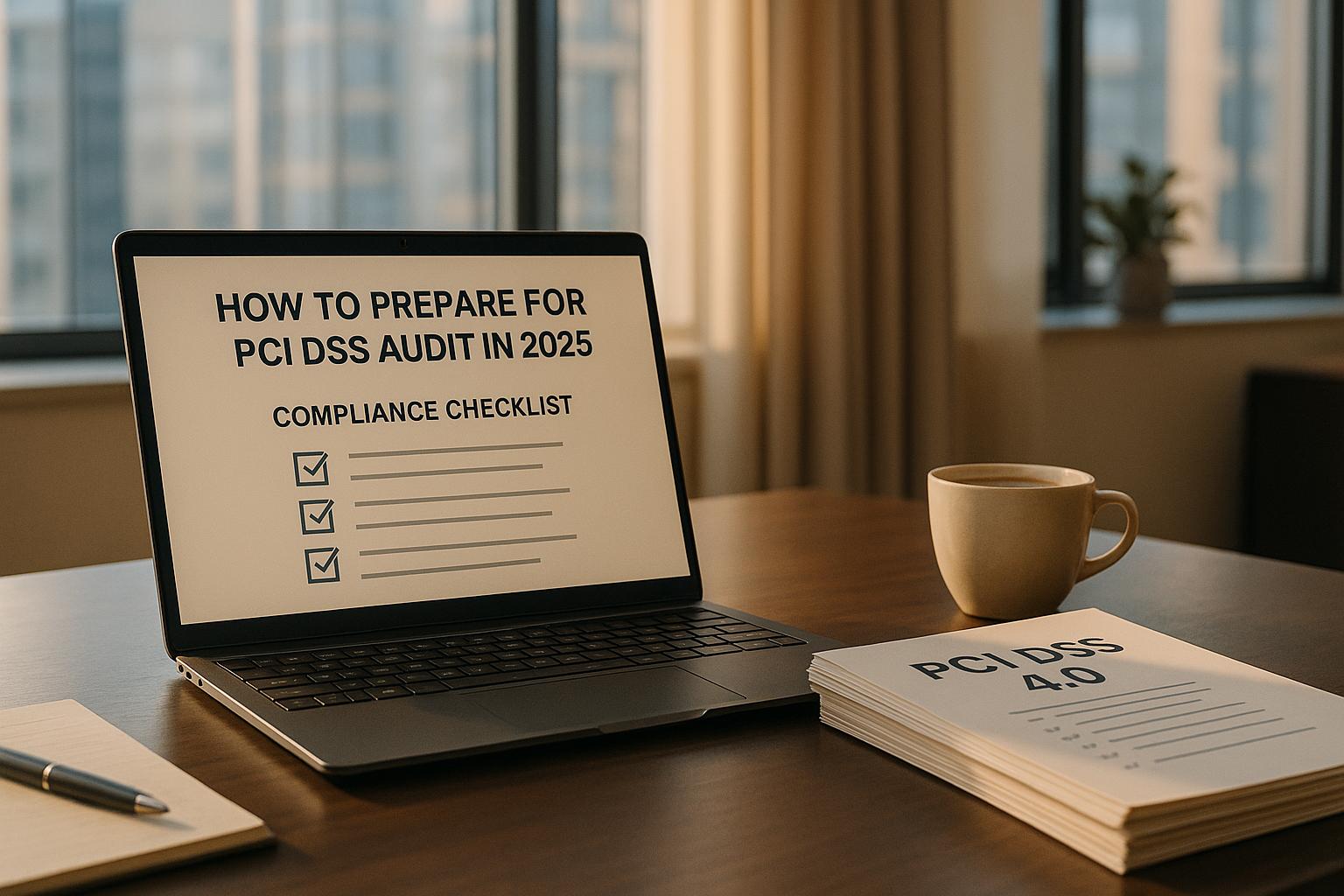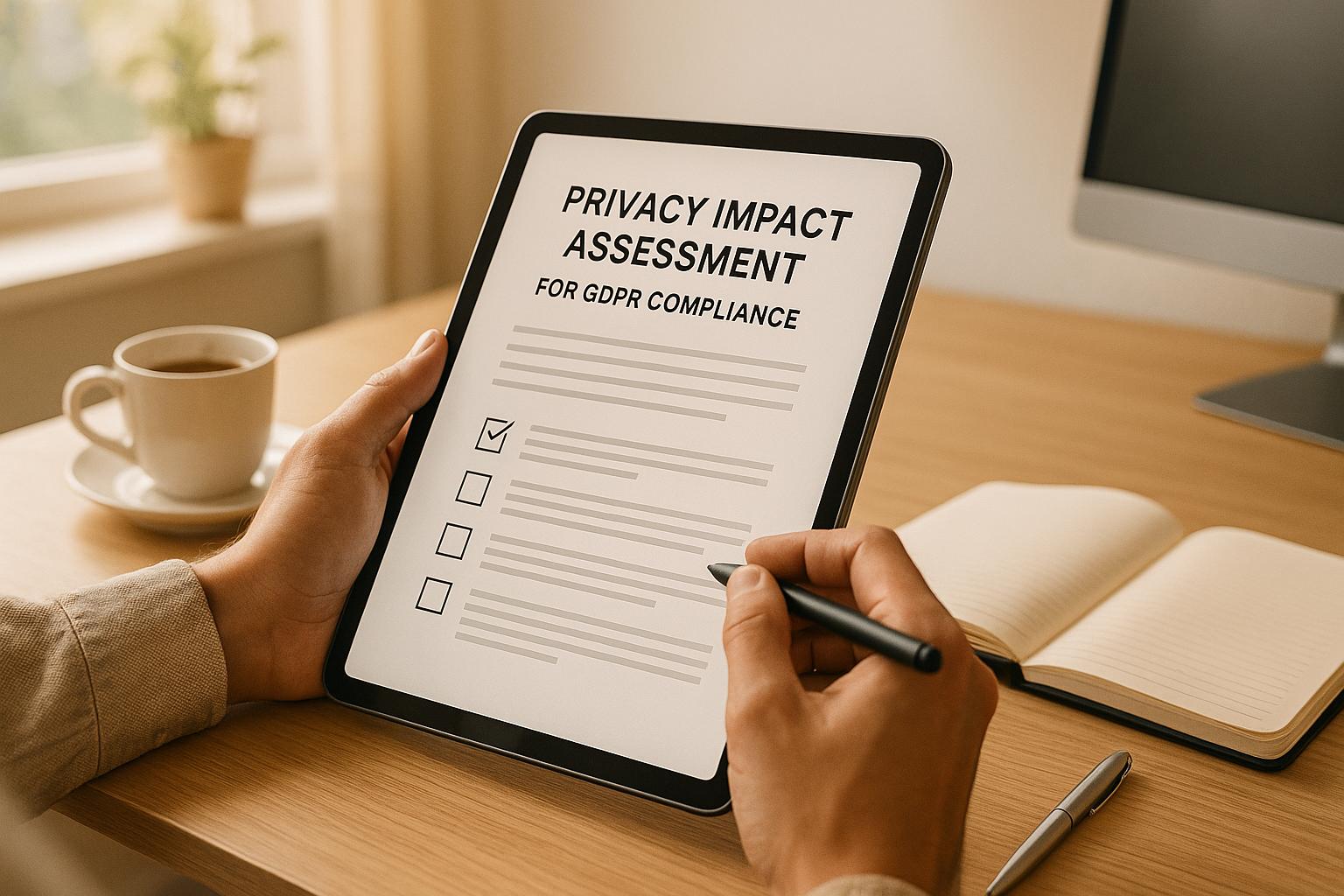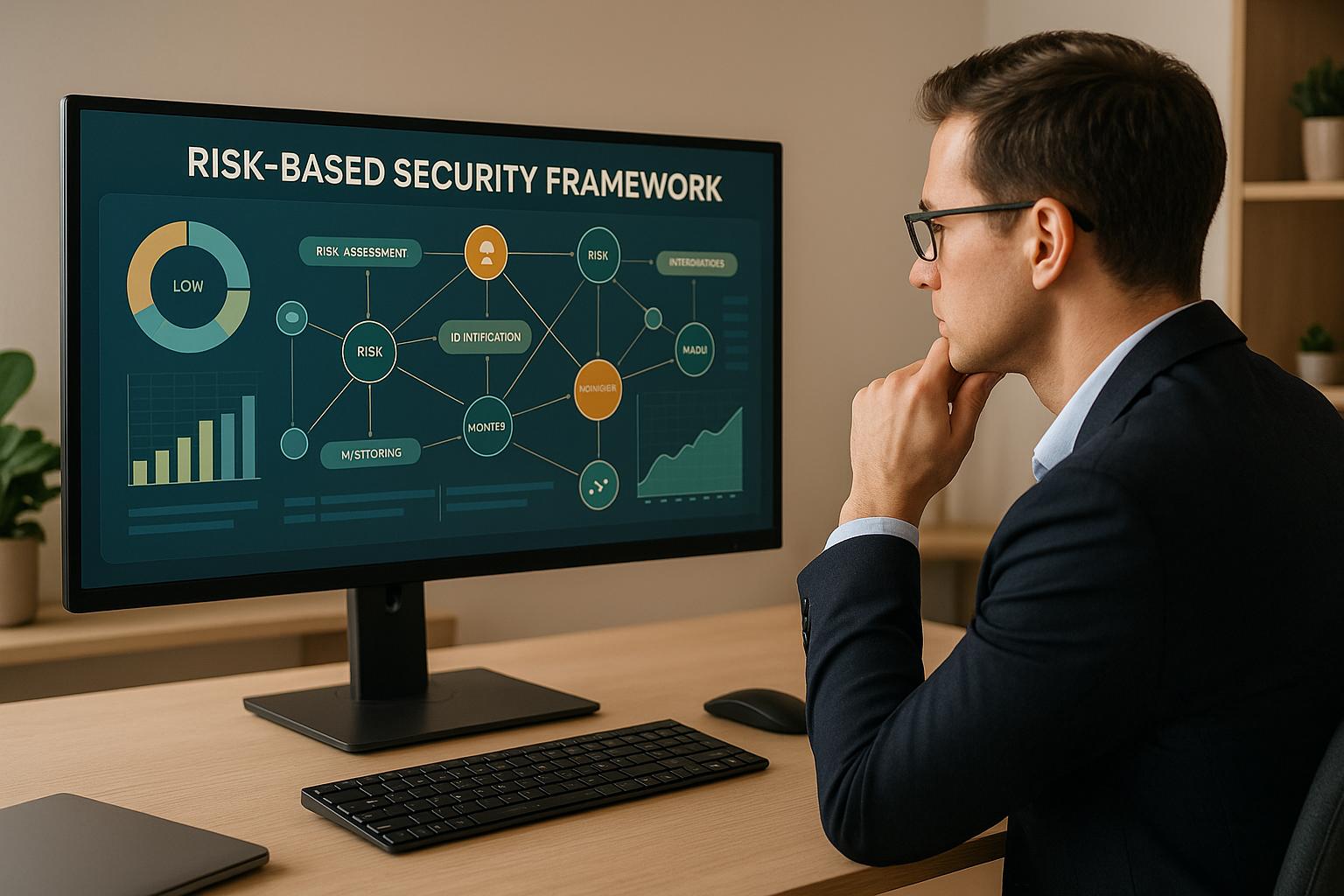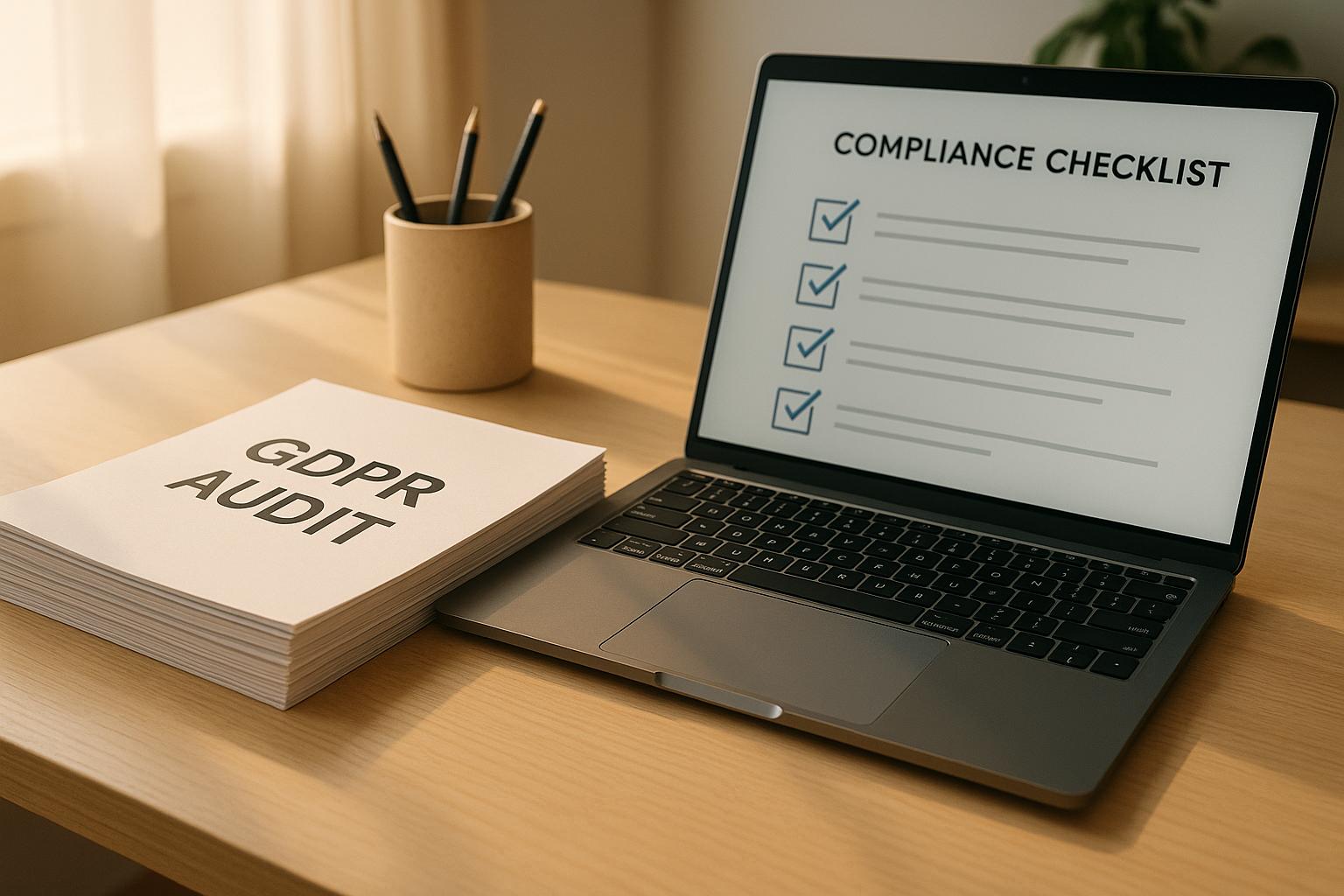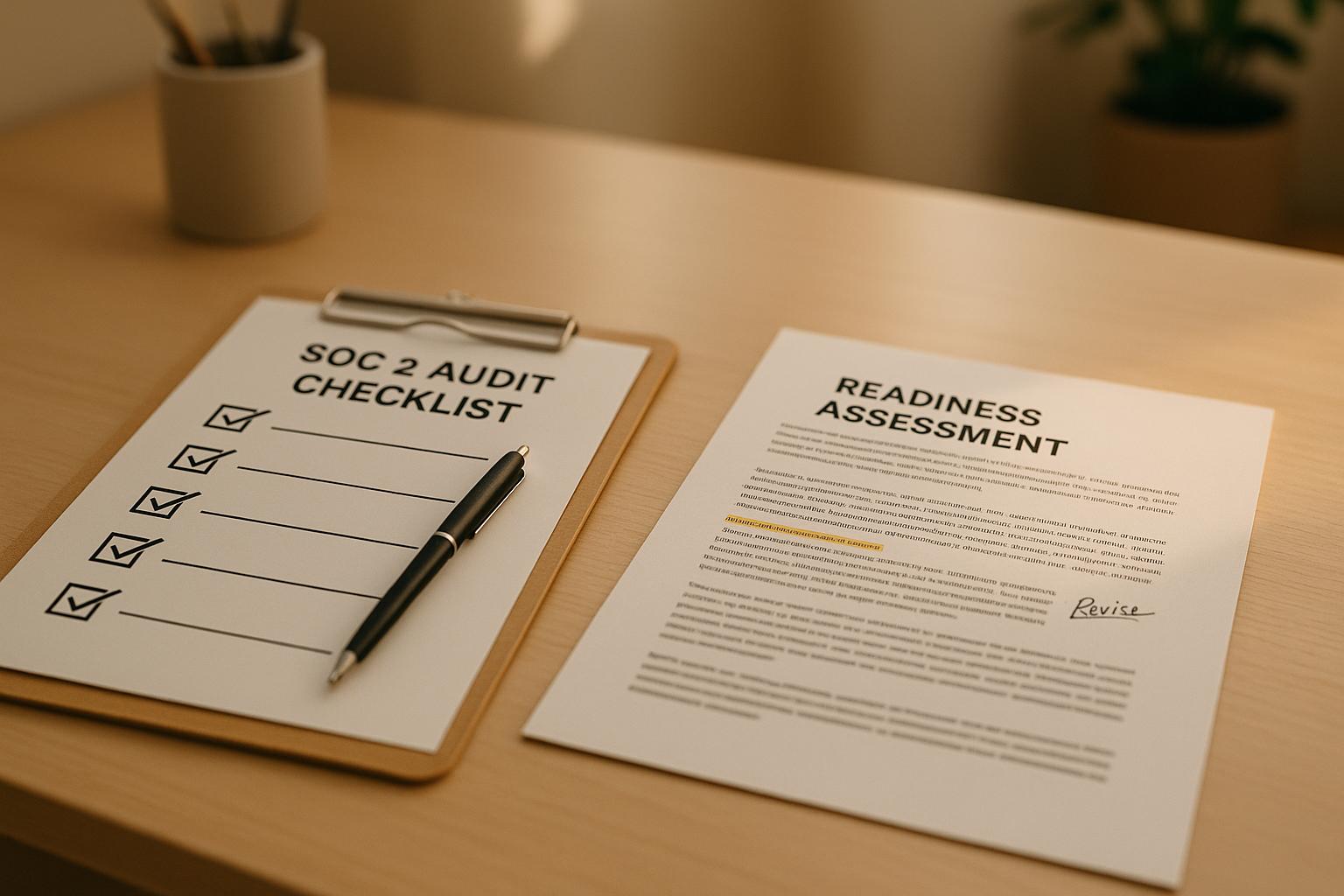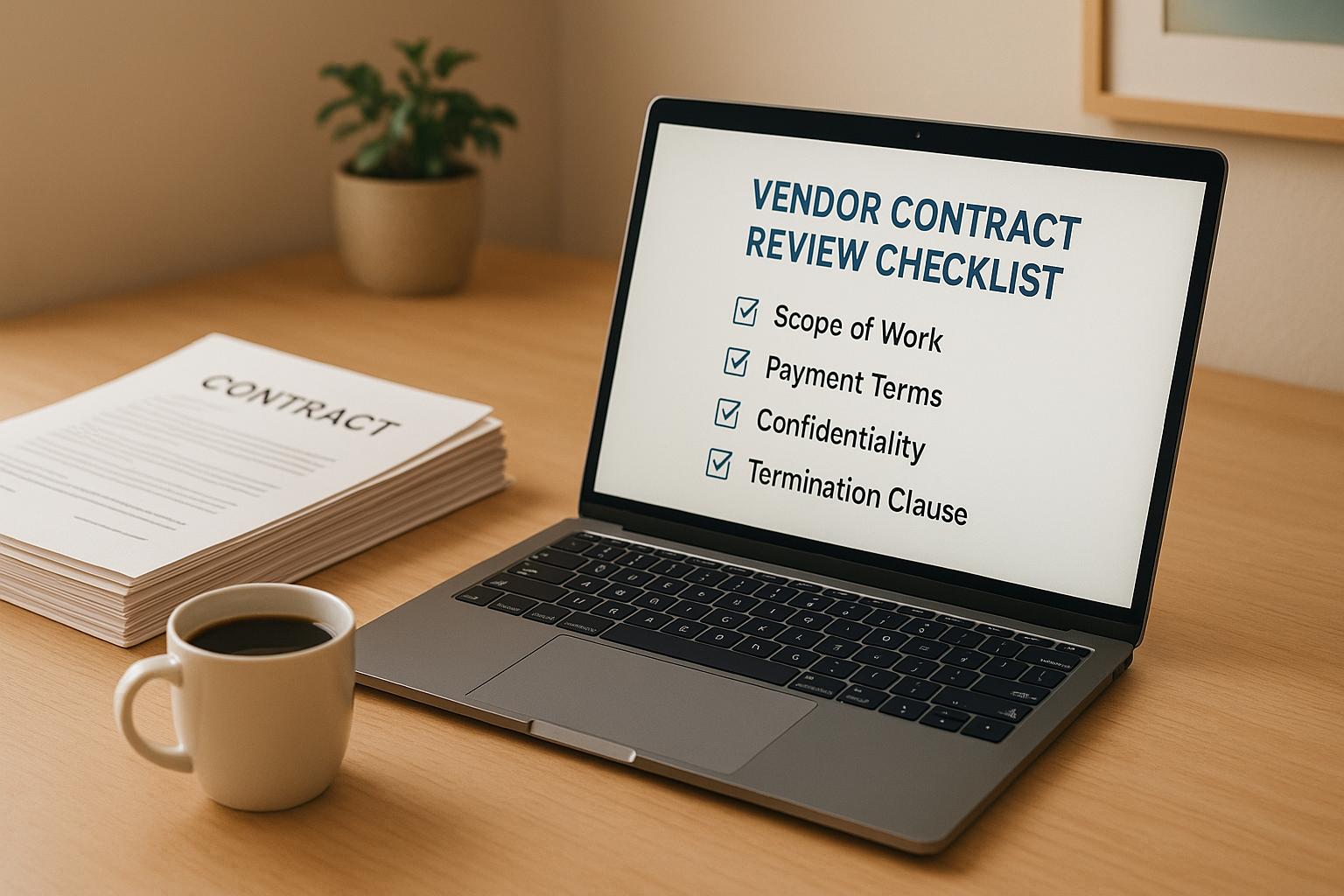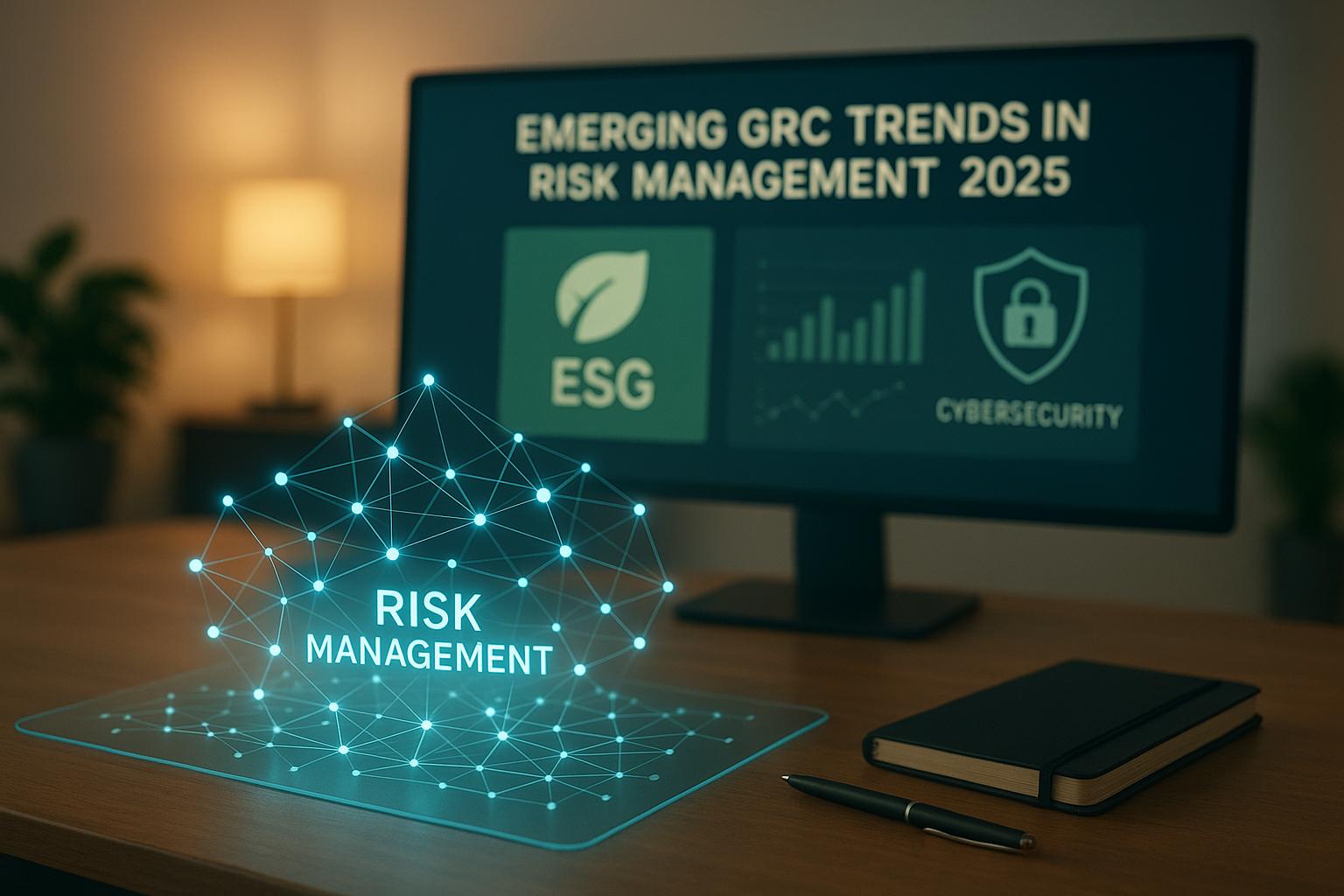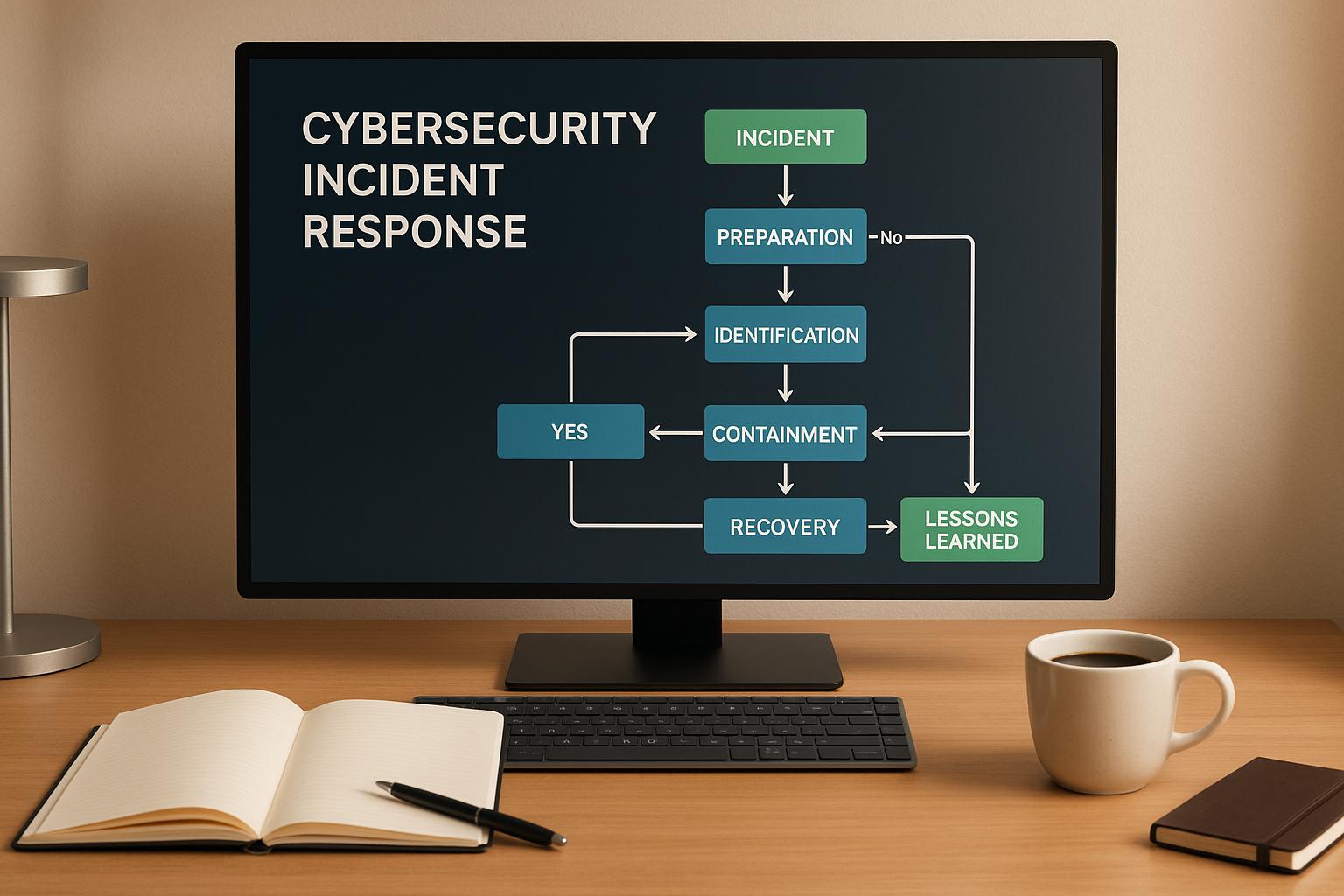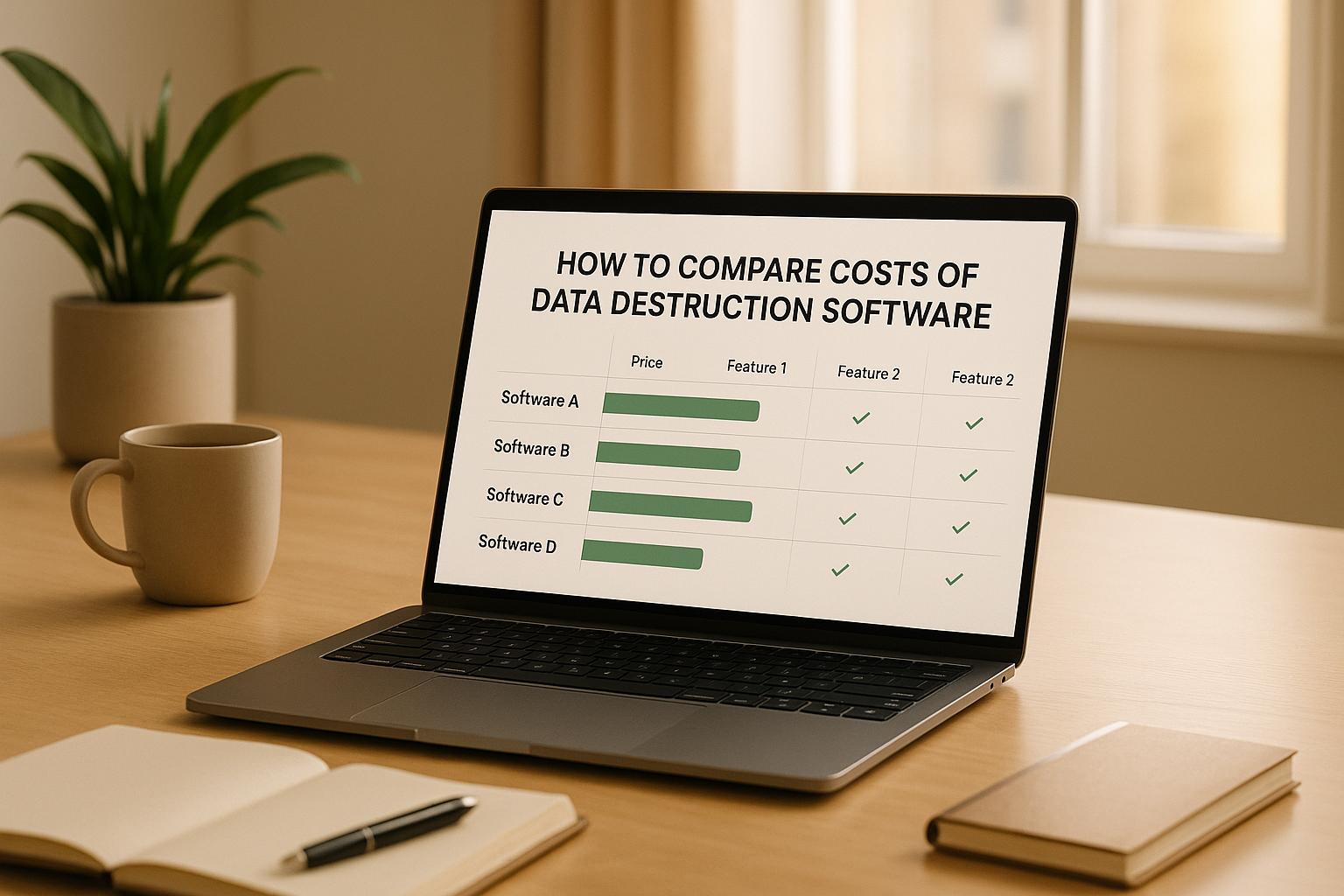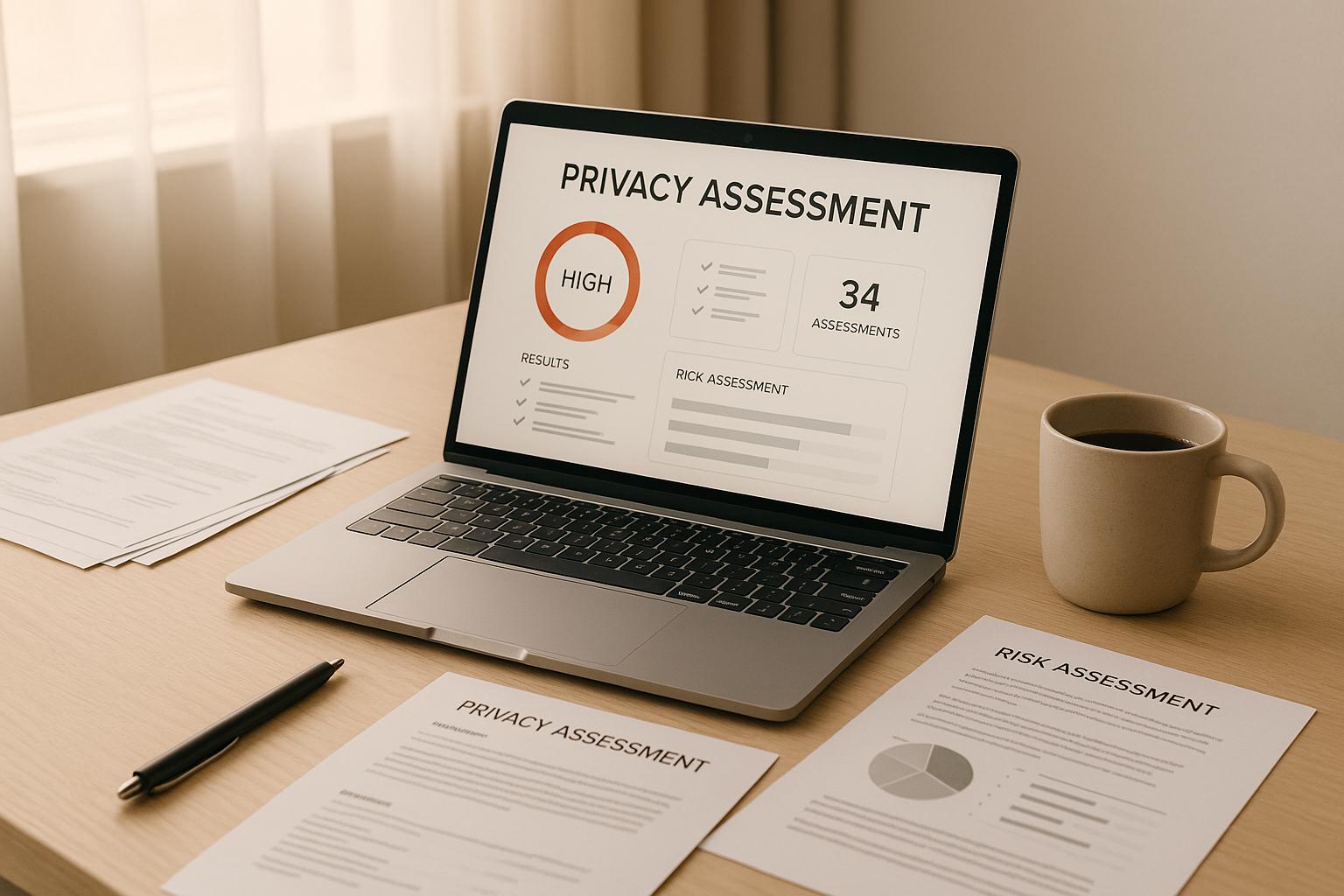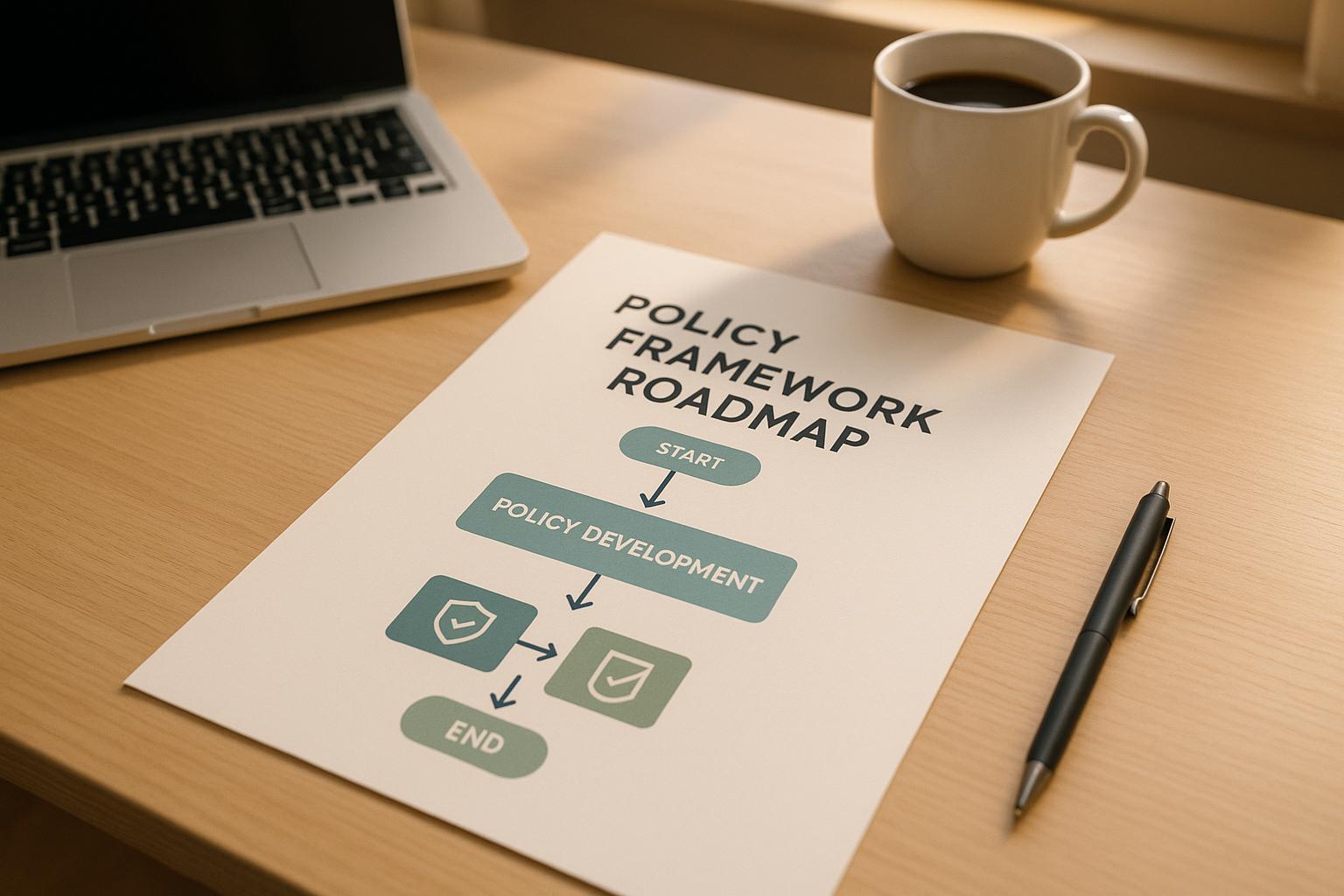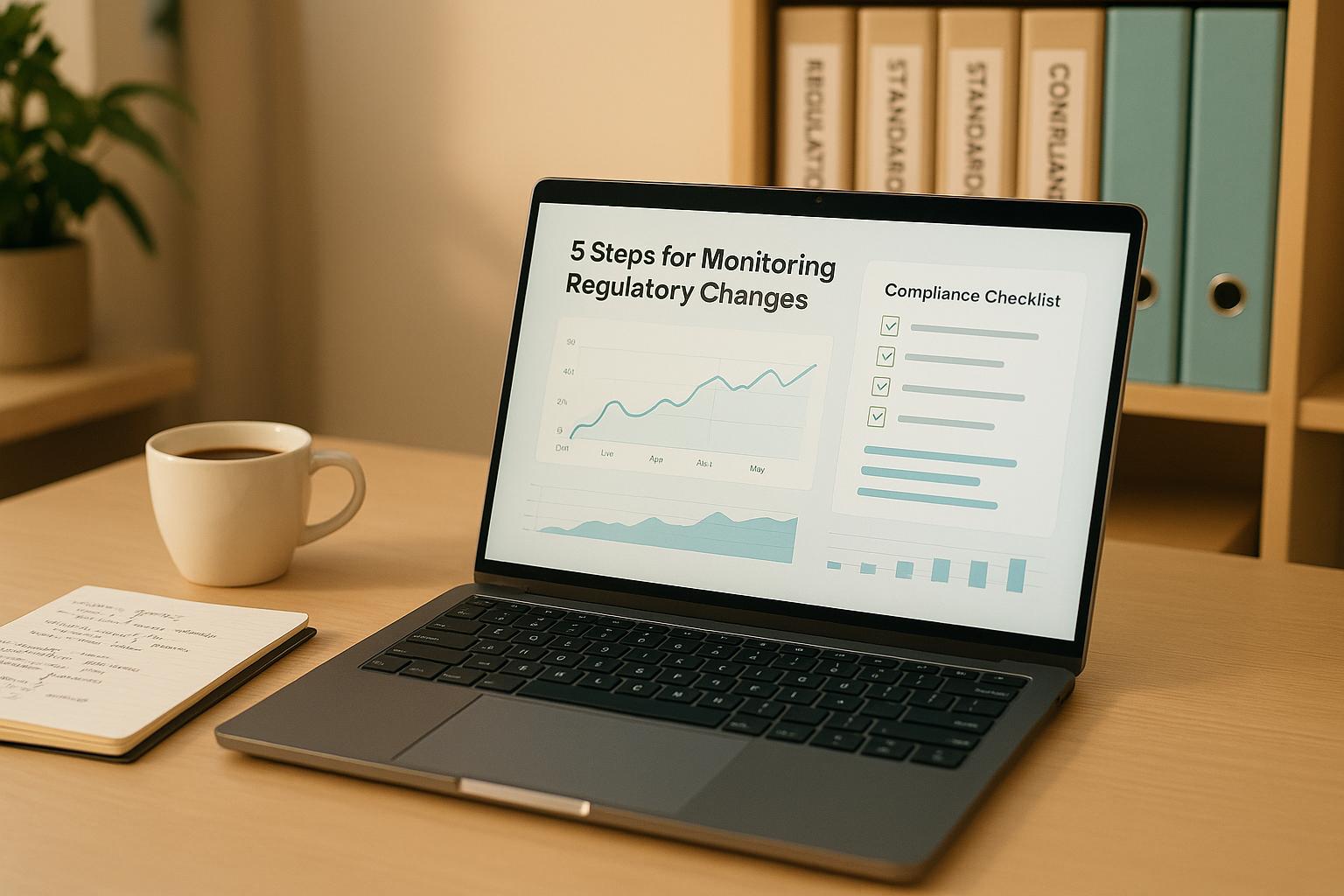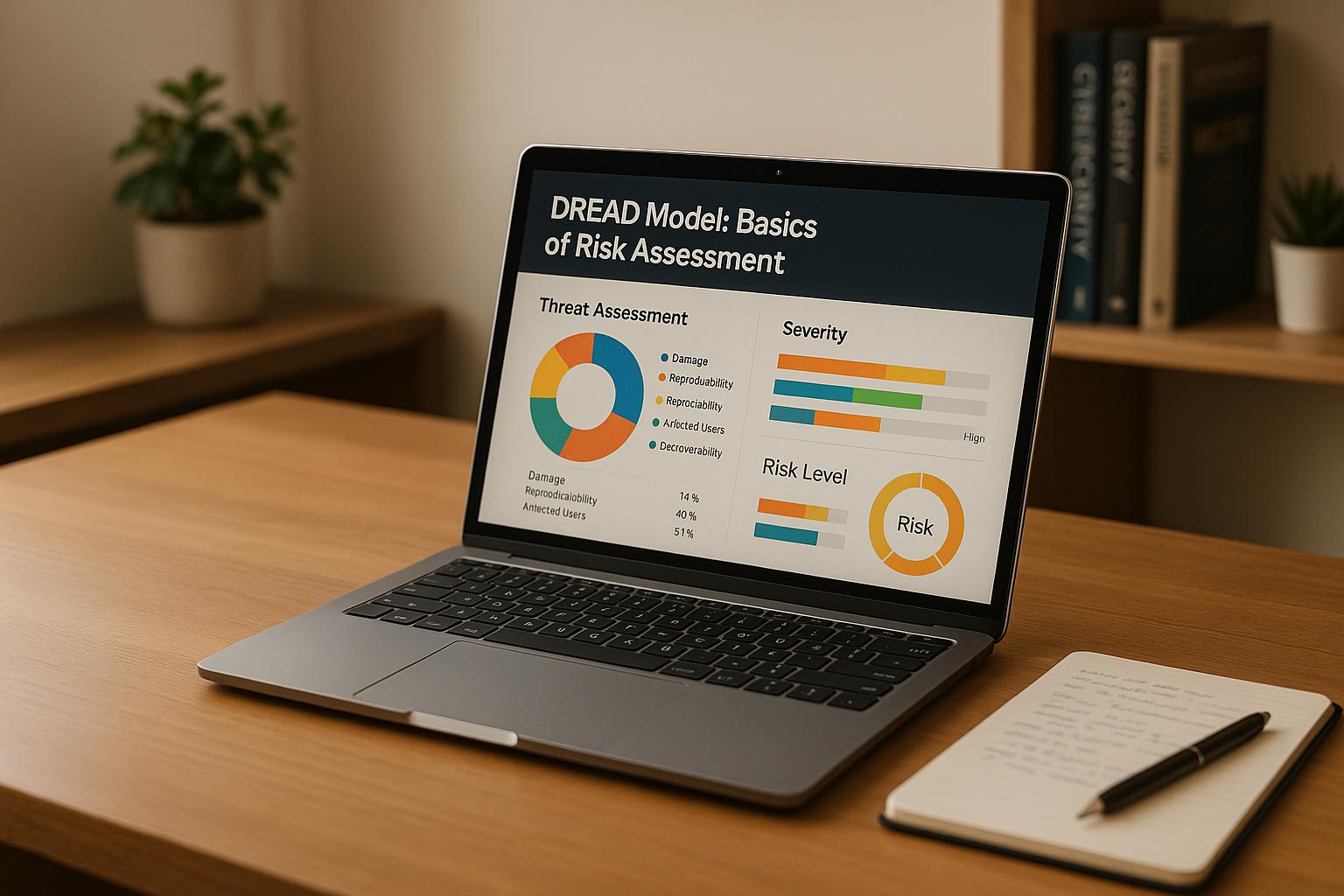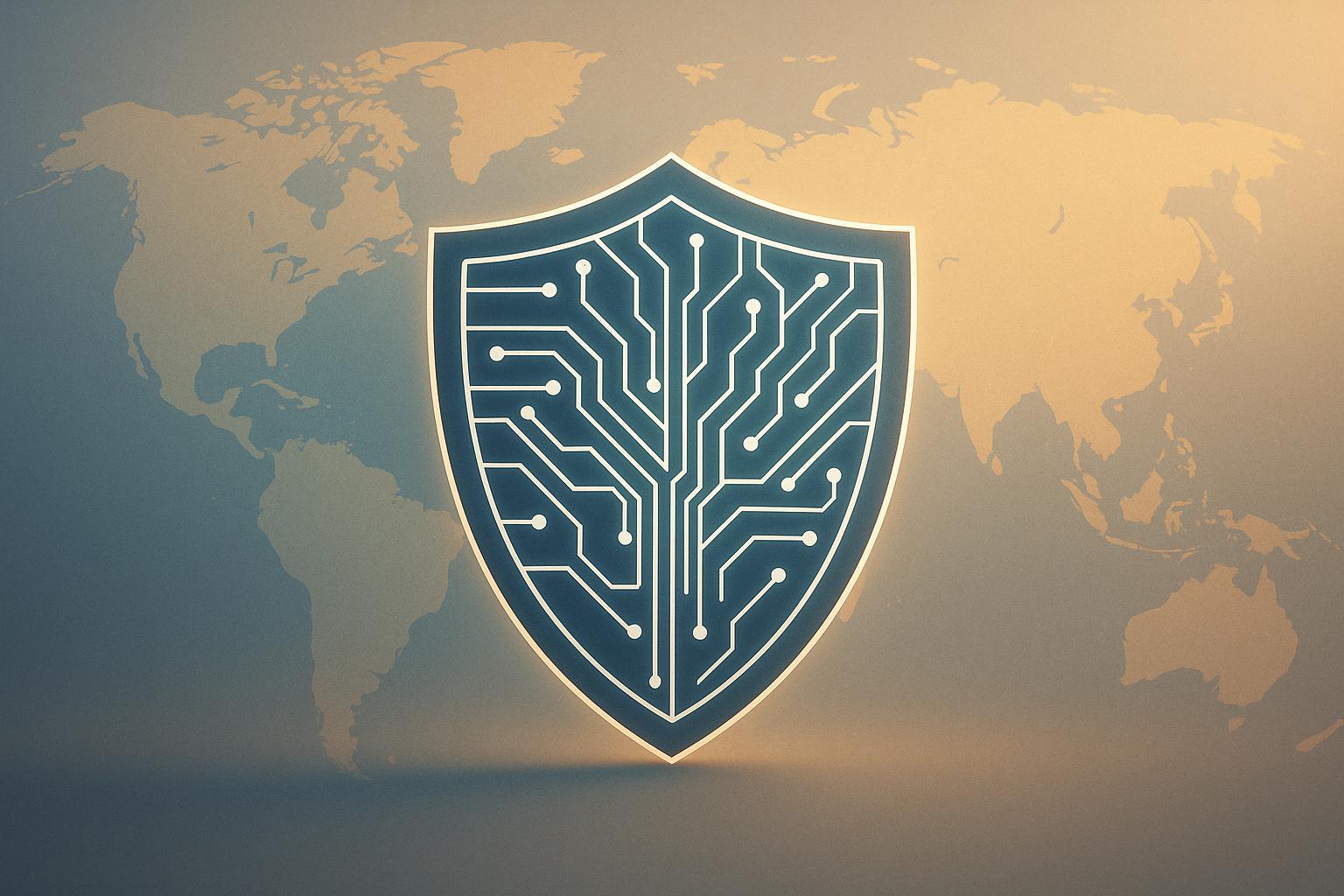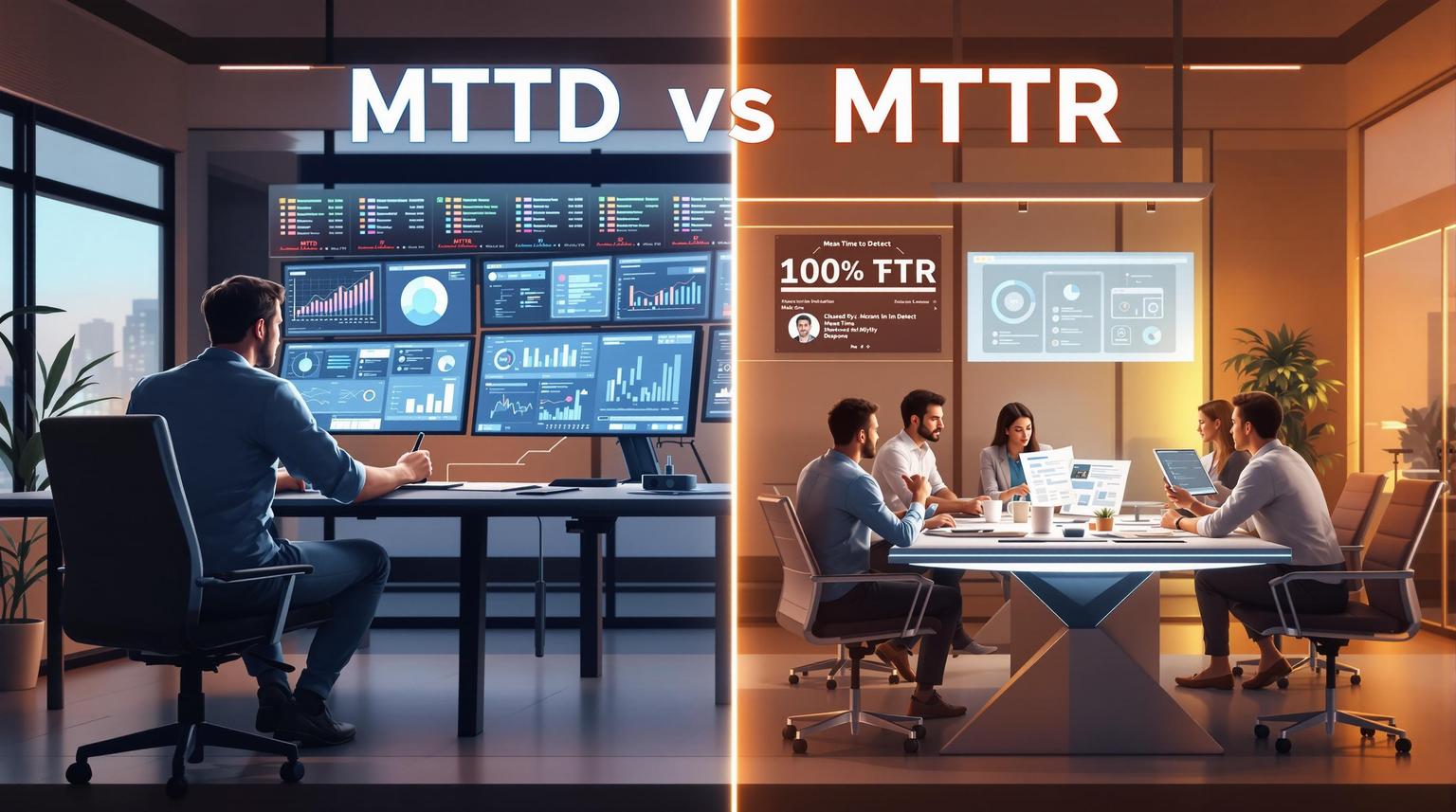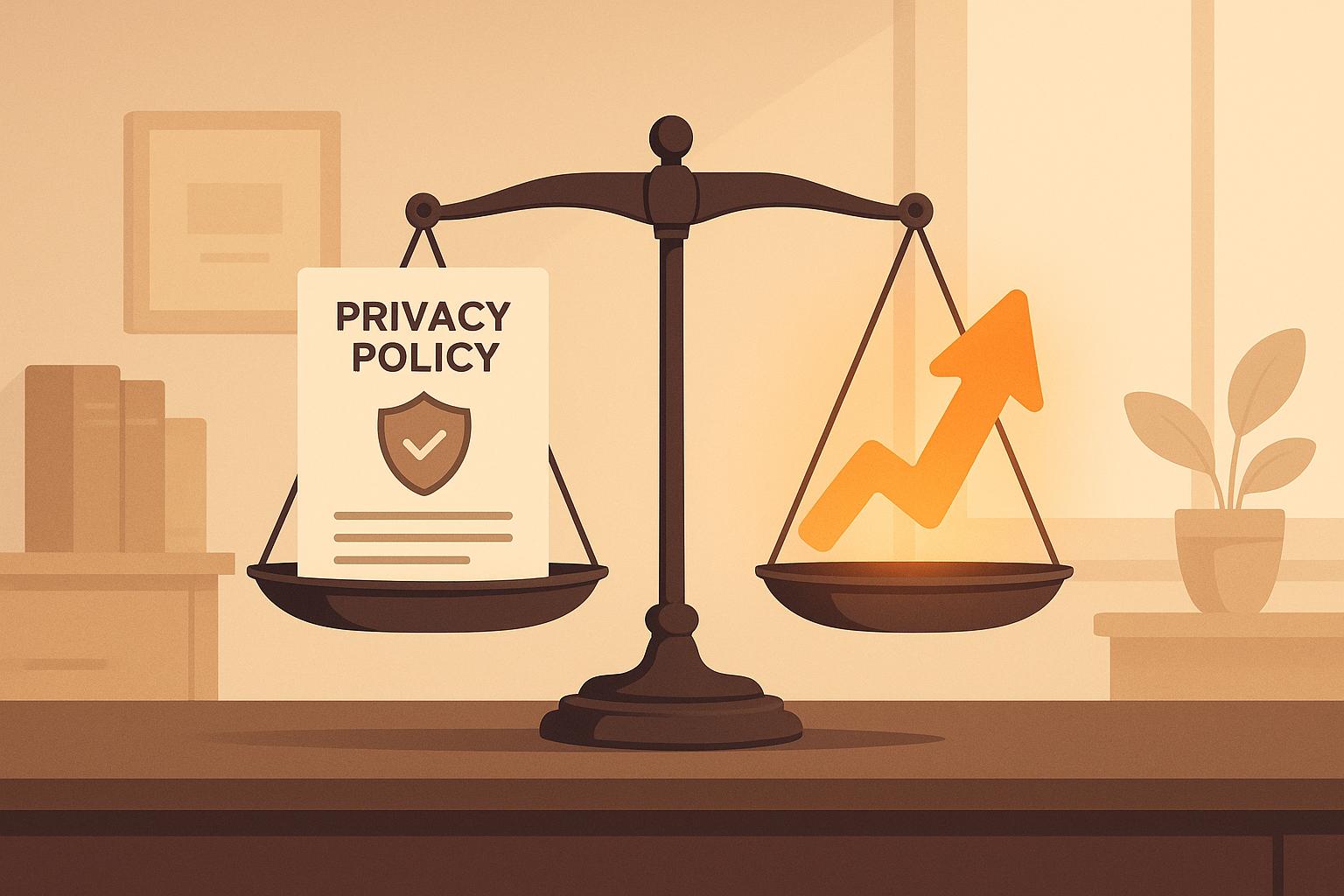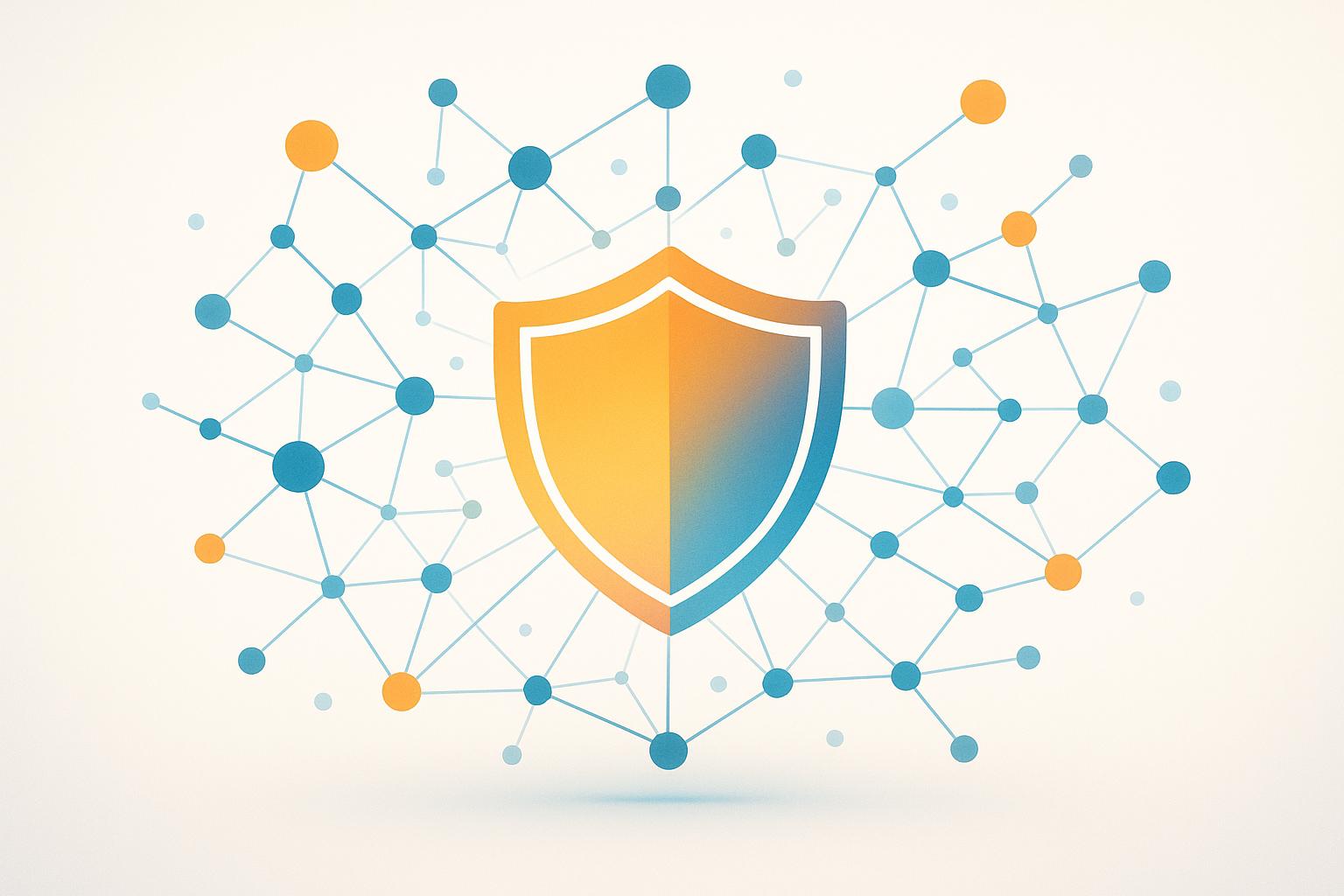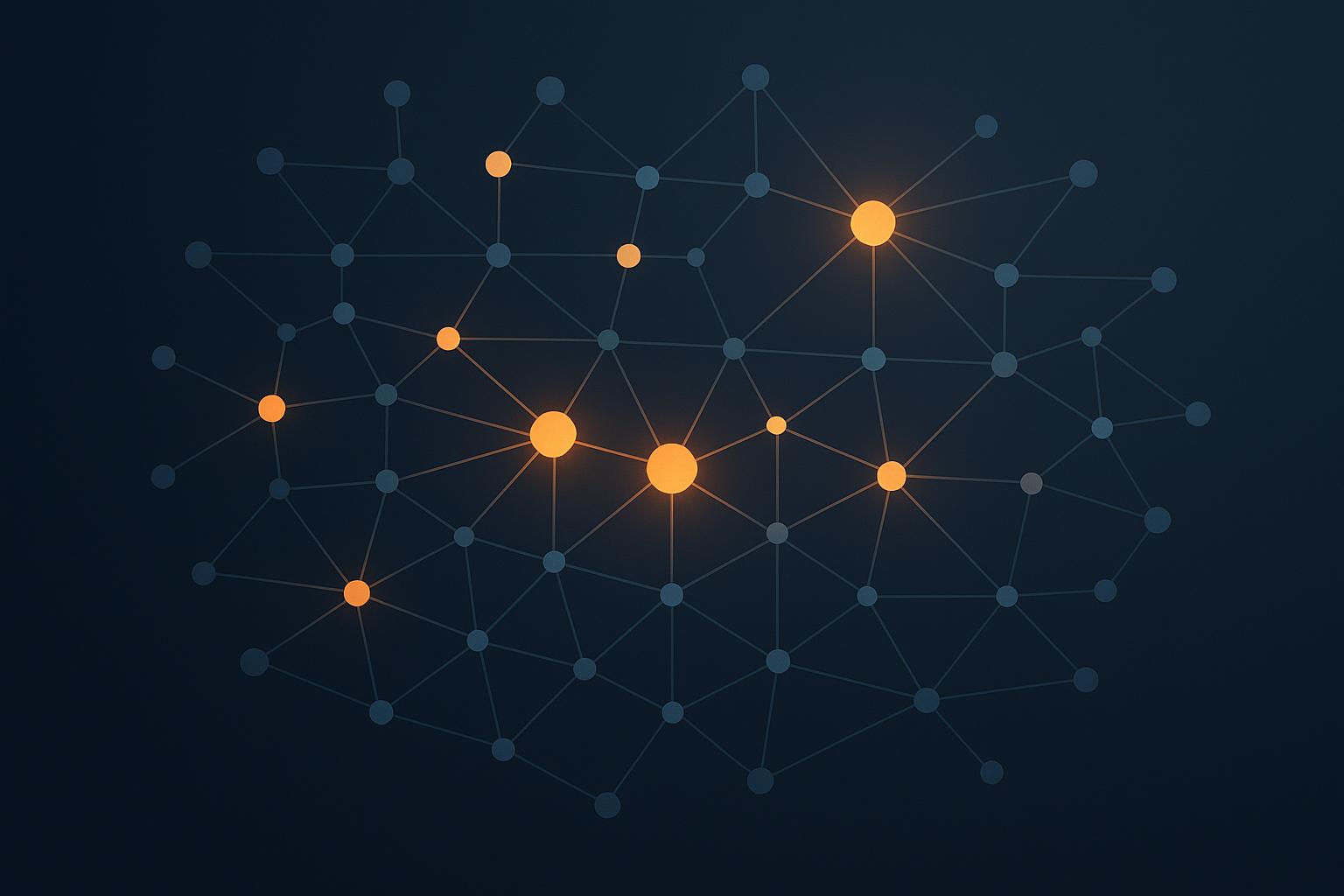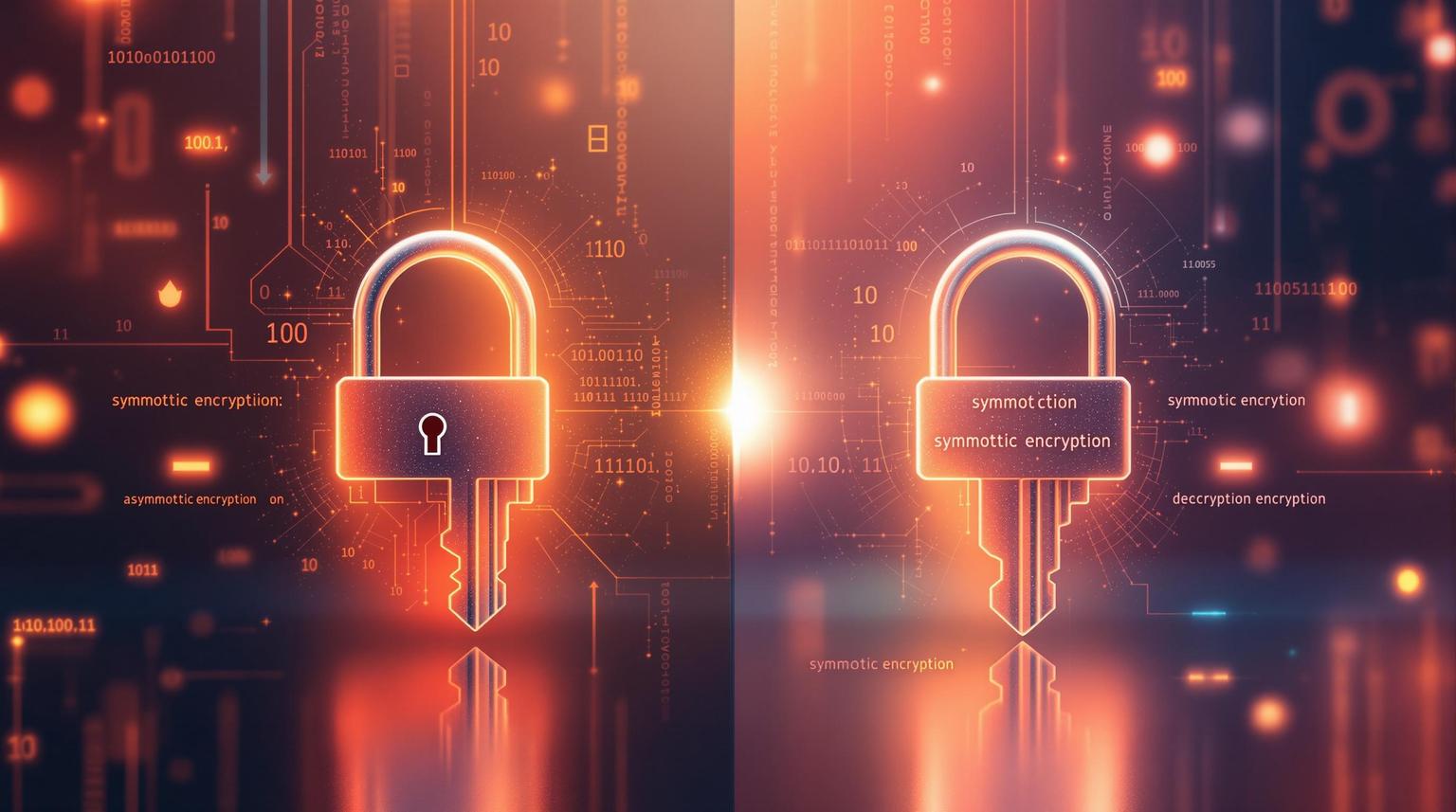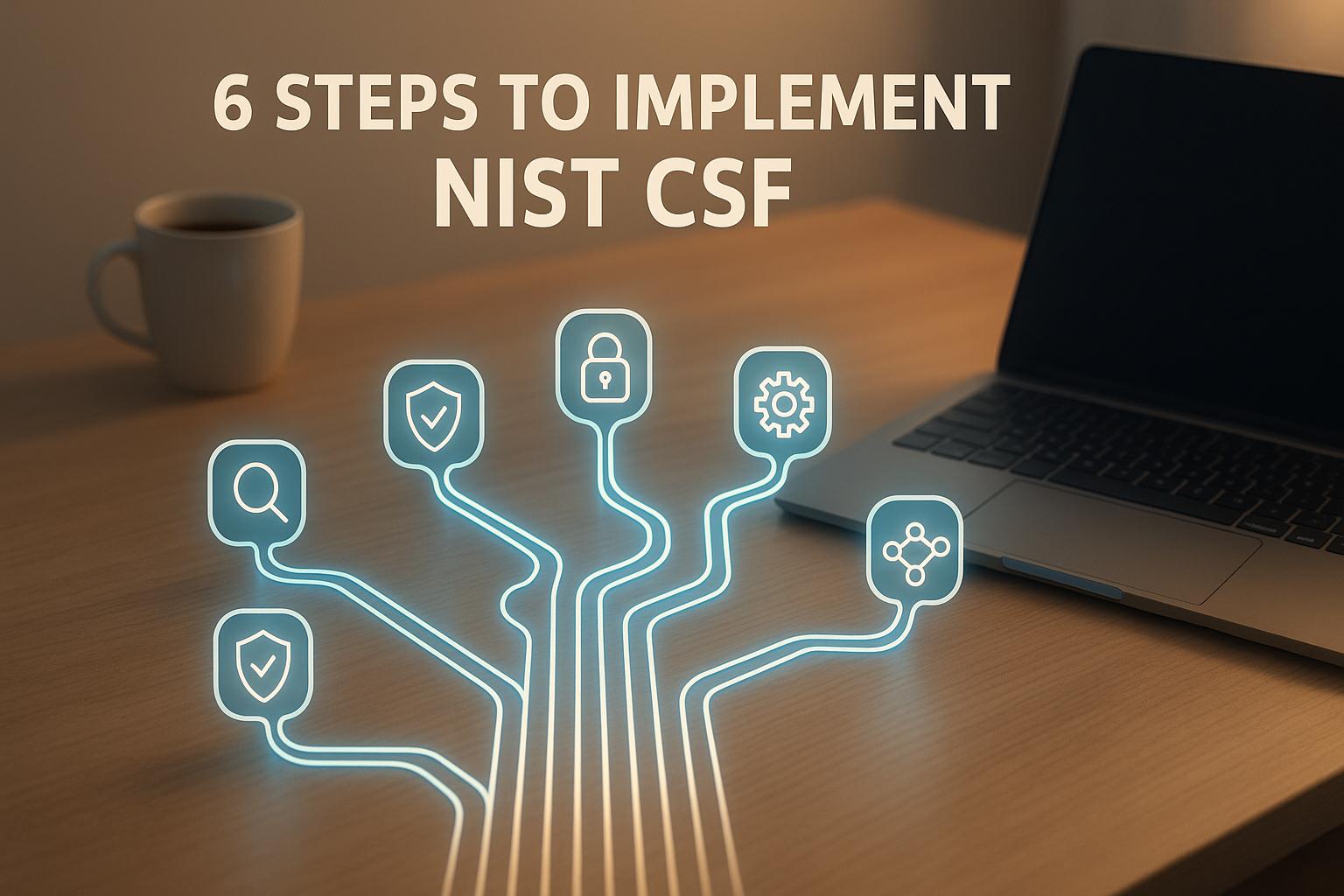
Want stronger cybersecurity? Follow these 6 steps to implement the NIST Cybersecurity Framework (CSF):
- Catalog Your Assets: List all hardware, software, and data systems to identify vulnerabilities.
- Choose Security Controls: Select measures to protect critical assets based on risk and compliance.
- Deploy Controls: Implement safeguards like network segmentation and centralized logging.
- Perform Risk Assessments: Identify and prioritize threats to address the most critical risks first.
- Define Your Target Profile: Set clear security goals and fill gaps between your current and desired state.
- Monitor and Update: Continuously track, refine, and adapt your defenses to evolving threats.
The NIST CSF helps organizations manage cybersecurity risks, align with regulations, and protect sensitive data. Whether you're a small business or a large enterprise, these steps provide a structured path to improve your cybersecurity defenses.
Implementing the NIST Cybersecurity Framework in 7 Steps
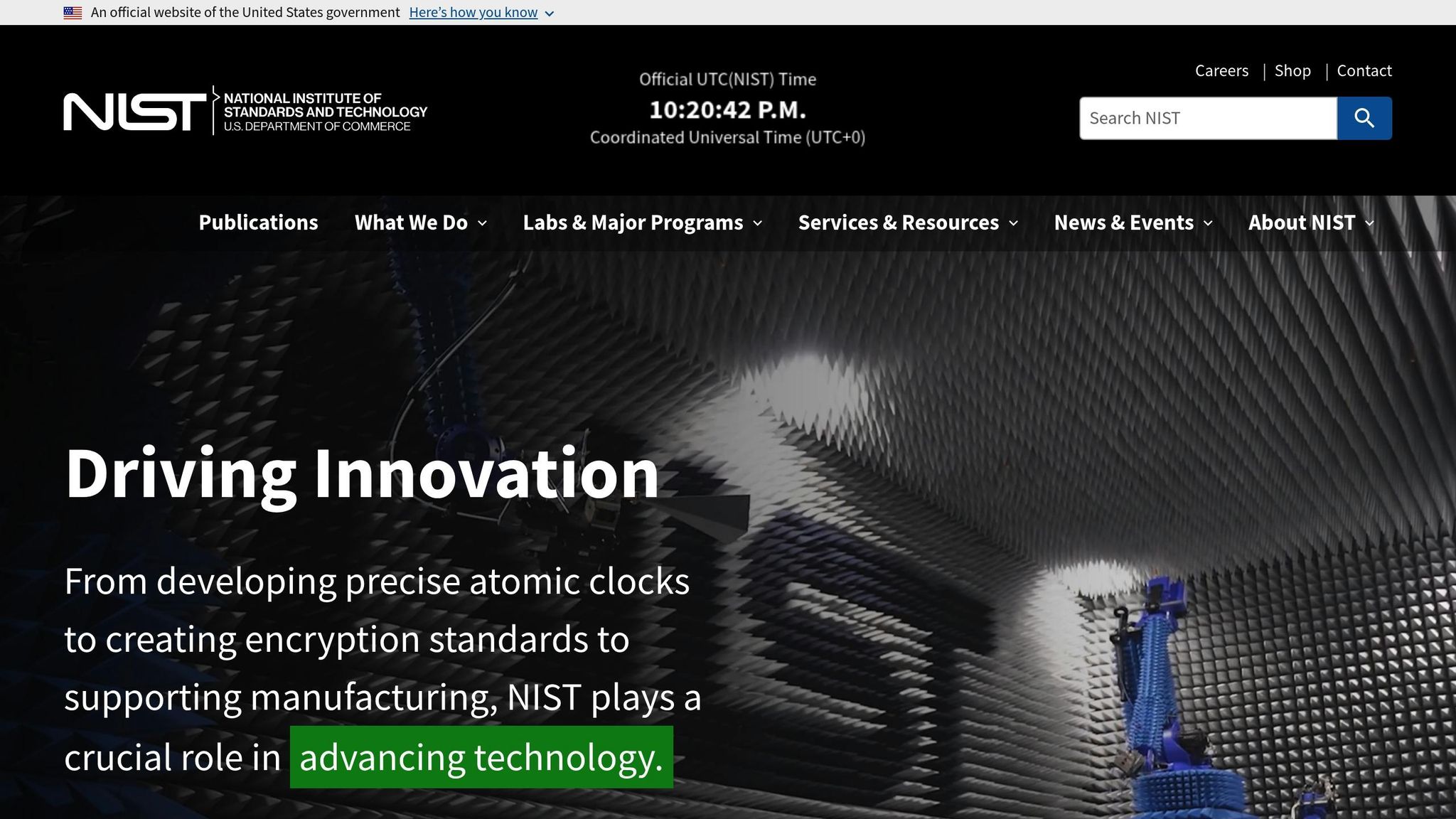
What is the NIST Cybersecurity Framework
The NIST Cybersecurity Framework is a set of guidelines developed by NIST to help organizations manage and reduce cybersecurity risks. First introduced in 2014 as a response to a presidential executive order aimed at improving critical infrastructure security, the framework has since become a widely used standard across industries .
One of its key strengths is providing a common language for managing cybersecurity risks, bridging the gap between technical teams and non-technical stakeholders. This shared understanding simplifies complex security topics, making them more actionable for everyone involved.
What makes the NIST CSF stand out is its structured approach, which helps organizations identify risks, protect their assets, and recover from incidents. It doesn’t just outline what needs to be done - it also helps prioritize tasks and allocate resources effectively.
The most recent version, V1.1, was released in April 2018 and continues to serve as a cornerstone for cybersecurity programs across the nation. This introduction lays the foundation for exploring the framework’s structure and its key functions.
5 Core Functions of NIST CSF
The NIST Cybersecurity Framework is built on five core functions, which form the backbone of any successful cybersecurity strategy. These functions are designed to work together and adapt continuously to meet an organization’s evolving security needs.
- Identify: This function is the starting point for any cybersecurity program. It helps organizations understand their systems, assets, and risks. According to NIST, it focuses on "developing an organizational understanding to manage cybersecurity risk to systems, people, assets, data, and capabilities". Activities include asset management, risk assessments, governance, and crafting risk management strategies.
- Protect: This function ensures critical operations continue by implementing safeguards. NIST explains, "The Protect Function outlines appropriate safeguards to ensure delivery of critical infrastructure services", helping to limit the impact of potential incidents. Key areas include identity management, access control, employee training, and data security.
- Detect: This function is about spotting cybersecurity events as they happen. NIST describes it as defining "appropriate activities to identify the occurrence of a cybersecurity event", enabling timely discovery of threats. It involves monitoring for anomalies, continuous security checks, and maintaining detection processes.
- Respond: This function prepares organizations to act when incidents occur. NIST states, "The Respond Function includes appropriate activities to take action regarding a detected cybersecurity incident", helping to minimize damage. It covers response planning, communication, mitigation, and post-incident analysis.
- Recover: This final function focuses on bouncing back from incidents. According to NIST, it "identifies appropriate activities to maintain plans for resilience and to restore any capabilities or services that were impaired due to a cybersecurity incident". It includes recovery planning, making improvements, and maintaining transparent communication.
These functions not only guide technical actions but also align cybersecurity efforts with broader business goals.
Why Businesses Need NIST CSF
The NIST CSF addresses critical business concerns by offering a structured way to manage cybersecurity risks, ensure compliance, and build trust among stakeholders. Organizations using the framework benefit from a consistent approach to detecting, responding to, and recovering from cybersecurity incidents, which reduces downtime and limits potential damage.
One major advantage is regulatory alignment. The framework simplifies compliance with standards like HIPAA, CMMC, and PCI-DSS by offering a unified strategy for meeting these requirements.
Another benefit is the framework’s ability to enhance organizational reputation. Adopting NIST CSF demonstrates a commitment to security best practices, which can boost trust among customers, partners, and regulators.
The framework’s flexibility allows it to be applied across various industries. For example, hospitals use it to secure connected medical devices and protect patient data through encryption. Financial institutions rely on it to implement real-time monitoring and establish Security Operations Centers for rapid threat response.
The Federal Trade Commission highlights its versatility, stating, "The NIST Cybersecurity Framework helps businesses of all sizes better understand, manage, and reduce their cybersecurity risk and protect their networks and data." This endorsement underscores the framework’s ability to scale effectively, from small businesses to large enterprises, while addressing diverse organizational needs and risk profiles.
6 Steps to Implement NIST CSF
Implementing the NIST Cybersecurity Framework (CSF) involves transforming broad security guidelines into actionable steps. These six steps provide a structured path for organizations to align cybersecurity efforts with their business goals and regulatory responsibilities. Each step builds on the previous one, creating a strong foundation for managing cybersecurity effectively.
Step 1: Catalog Your Information Systems and Assets
Start by identifying and categorizing all your organization's systems and assets. This includes everything from hardware and software to data and information systems.
Create a detailed inventory of critical assets, documenting their roles and interdependencies. This inventory not only helps you understand your organization's infrastructure but also highlights potential vulnerabilities that attackers might exploit.
Step 2: Choose Security Controls
With a clear inventory in hand, the next step is selecting appropriate security controls. This involves balancing your organization's risk tolerance, compliance requirements, and operational priorities. A thorough understanding of your hardware and software assets is key to determining which systems need robust protection based on their importance to the business and the sensitivity of the data they handle.
Choose controls that align with regulatory standards and focus on high-risk areas within your budget. Ensure these controls cover all five NIST CSF functions - Identify, Protect, Detect, Respond, and Recover - to create a well-rounded security strategy.
Step 3: Deploy Security Controls
Once you've selected the controls, it's time to implement them. Begin with foundational measures like network segmentation to limit the impact of incidents and centralized logging for better monitoring and response.
Document how each control operates, including policies, procedures, and configurations. A phased deployment approach can help prioritize high-risk areas first. Be sure to record details such as configuration settings, responsible personnel, and maintenance schedules to support future audits and updates.
Step 4: Perform a Risk Assessment
A thorough risk assessment is essential for making informed security decisions. This process involves identifying vulnerabilities, assessing the likelihood of threats, and evaluating the potential impact on your systems and operations.
Use a combination of automated tools and manual reviews to pinpoint weaknesses. Prioritize risks based on their likelihood and potential consequences, such as financial loss, operational disruption, or reputational harm. This ensures that the most critical risks are addressed first.
Step 5: Define Your Target Profile
After assessing risks and deploying controls, set clear security goals that align your current practices with your desired security posture. Define a target state for each NIST CSF category based on your organization's risk tolerance, compliance needs, and business objectives.
Compare your current capabilities to your target profile to identify gaps and areas for improvement. Establish realistic timelines and allocate resources accordingly. Document your decisions with clear justifications and criteria for measuring success.
Step 6: Monitor and Update
Continuous monitoring is crucial for staying ahead of evolving threats. It allows you to track key metrics, validate the effectiveness of your controls, and make timely adjustments based on real-time data and threat intelligence.
Integrate monitoring efforts with your incident response plan to quickly detect and address new threats. Regularly refine your processes, update your framework to accommodate new infrastructure, and ensure employees receive ongoing training. Adjust priorities as needed based on updated risk assessments and organizational goals.
sbb-itb-ec1727d
Using Outsourced Experts for NIST CSF Implementation
Tackling the NIST Cybersecurity Framework (CSF) often requires expertise that may not exist within an organization's internal team. In such cases, outsourcing can be a smart, cost-effective solution.
Why Outsourcing NIST CSF Work Makes Sense
When you outsource NIST CSF implementation, you gain immediate access to seasoned professionals who specialize in cybersecurity frameworks. These experts bring a wealth of experience across industries, eliminating the need to build and train an internal team from scratch.
Maintaining an in-house cybersecurity team can be expensive. Think about the costs: salaries, training, software licenses, and technology tools. Outsourcing, on the other hand, leverages the economies of scale provided by Managed Security Service Providers (MSSPs), making it a more budget-friendly option.
"You get to leapfrog forward a lot of capabilities by bringing in an organization that's already matured them." - Rick McElroy, Principal Cybersecurity Strategist, Broadcom's Carbon Black business unit
The numbers back this up. About 28% of organizations already outsource their cybersecurity operations, and a whopping 98% of others plan to follow suit.
Beyond cost savings, outsourcing offers operational perks that are hard to match. Providers deliver 24/7 threat detection and response, something most in-house teams can't sustain. They also adapt to changing business needs without requiring new hires or infrastructure expansions. For instance, organizations using Security Operations Center as a Service (SOCaaS) report a 70% drop in cybersecurity incidents. Plus, 40% of organizations say outsourcing boosts their confidence in their cyber defenses.
These benefits highlight why specialized providers like Cycore are well-positioned to offer targeted support for NIST CSF adoption.
How Cycore Simplifies NIST CSF Implementation

Cycore builds on these advantages with a structured approach to NIST CSF adoption. Their services cover every phase of compliance, from assessments to audits, ensuring that organizations meet the framework's requirements seamlessly.
Their Virtual CISO (vCISO) services offer strategic cybersecurity leadership without the expense of hiring a full-time executive. This service helps organizations design cybersecurity programs aligned with NIST CSF, plan security roadmaps, and make informed decisions about risk management - all while keeping costs in check.
For businesses handling sensitive data, Cycore's Virtual Data Protection Officer (vDPO) services integrate privacy considerations into the NIST CSF framework. This dual focus ensures both cybersecurity and data protection are addressed together.
Cycore also eases administrative workloads through GRC Tool Administration, saving clients an impressive 1,656 hours annually and cutting security questionnaire response times by 66%. This efficiency allows internal teams to redirect their energy toward core business priorities while maintaining strong cybersecurity practices.
Their scalable service model fits organizations of all sizes and maturity levels. The Start-up plan focuses on single-framework compliance with basic vCISO services, while the Enterprise plan delivers advanced features like custom GRC tool integration, quarterly penetration testing, and premium access to security experts.
Cycore doesn't stop at implementation. Their ongoing monitoring and support ensure that NIST CSF compliance stays effective over time. This includes regular vulnerability reports, continuous compliance tracking, and updates to keep pace with new threats and evolving business needs.
Best Practices and Common Problems
Building on the six implementation steps, these best practices and common challenges can help refine how you approach the NIST Cybersecurity Framework, ensuring it delivers maximum value for your organization.
Effectively implementing the NIST Cybersecurity Framework requires focusing on proven strategies while being mindful of potential hurdles that could hinder your progress.
Best Practices for NIST CSF Implementation
Secure executive support early on. Leadership buy-in is critical. When decision-makers understand that the NIST CSF not only helps manage risks but also meets client needs - especially in sectors like critical infrastructure - they're more likely to allocate the necessary resources. Educate them on how the framework benefits both the business and its technical operations.
Encourage collaboration across departments. Cybersecurity isn’t just an IT issue - it impacts every corner of your organization, from HR to operations. Breaking down silos and establishing clear communication channels ensures that everyone understands their role in maintaining security. This teamwork helps close gaps that could otherwise be exploited.
Develop strong governance policies. Clearly define cybersecurity roles and responsibilities, and review these policies annually to address compliance gaps. The Govern function in the framework exists to integrate cybersecurity into the organization's culture rather than treating it as something separate from daily operations.
Conduct regular risk assessments. Continuously evaluate vulnerabilities and create targeted mitigation strategies to safeguard your digital assets.
Invest in employee training. Human error is one of the largest cybersecurity risks. Training all staff - not just IT - on threats like phishing and social engineering creates a strong first line of defense. Regular training sessions ensure everyone is equipped to contribute to the organization's security.
Embrace continuous improvement. The NIST CSF isn’t a checklist or a one-time certification. It’s a tool for ongoing security management, designed to help organizations adapt and mature their cybersecurity practices over time. A mindset focused on consistent improvement ensures your defenses evolve alongside emerging risks.
Prioritize outcomes over processes. The framework emphasizes achieving meaningful cybersecurity outcomes rather than adhering to rigid rules. Tailor its flexible structure to address your organization’s specific needs, avoiding the trap of simply "checking boxes".
While these practices can significantly reduce risks, organizations often encounter challenges that need proactive solutions.
How to Solve Common Implementation Problems
Organizations frequently face predictable hurdles when implementing the NIST CSF. Here's how to tackle some of the most common issues:
Incomplete asset inventories. Many organizations discover critical systems they didn’t even know existed. To address this, use automated tools for asset discovery and maintain an up-to-date inventory. Relying on manual tracking alone often falls short in today’s fast-changing IT environments.
Limited resources. About 50% of organizations report understaffed cybersecurity programs. To overcome this, focus on high-impact security investments, leverage open-source tools where possible, and explore cybersecurity grant opportunities. Partnering with managed security service providers or consultants can also help fill expertise gaps.
Outdated policies. Policies that don’t keep up with current threats can lead to compliance issues. Regularly update policies on access control, incident response, and data protection. Assign a compliance officer to monitor changes and coordinate annual reviews to stay aligned with NIST standards.
Weak security monitoring. Without proper monitoring, threats can go unnoticed. Implement tools like Security Information and Event Management (SIEM) systems and vulnerability scanners for better visibility into your systems. If building an in-house Security Operations Center isn’t feasible, consider outsourcing to a managed SOC provider.
Vendor-related risks. Third-party vendors can introduce vulnerabilities. Conduct thorough assessments, include strong security clauses in contracts, and perform regular audits of your suppliers. Remember, your vendors’ weaknesses can directly impact your organization.
Overwhelming documentation requirements. Managing extensive documentation can be daunting. Use compliance tools to automate these processes and centralize your records, reducing manual effort while ensuring you’re prepared for audits.
Too many tools. Accumulating multiple tools can create unnecessary complexity. Focus on understanding your needs and opt for simple, effective solutions rather than layering redundant technologies.
Adapting to evolving standards. Stay informed about updates to the NIST framework by subscribing to official updates and engaging with industry forums. Collaborating with peers can also provide insights into adapting to changes.
Organizations that address these challenges head-on position themselves far better than those that ignore them.
"From a security standpoint, NIST CSF is designed to help you manage risks and identify where your risks are. And as a business driver, if your clients are in the critical infrastructure space, all of them are going to have some requirements around the NIST standards." – Steve Siedeman, Director of Innovation, Prescient Security
Ultimately, success with the NIST CSF boils down to preparation, persistence, and treating cybersecurity as an ongoing process rather than a one-time effort.
Conclusion
Implementing the NIST Cybersecurity Framework becomes much more approachable when broken down into clear, actionable steps. These six steps help organizations transition from facing overwhelming cybersecurity challenges to establishing a systematic, manageable process that strengthens their overall security posture. By following this structured approach, businesses can tackle complexity and achieve measurable improvements in their cybersecurity efforts.
The stakes are high. In 2023 alone, the United States saw 3,205 data breaches, impacting over 353 million individuals. Organizations that focus on the Detect, Respond, and Recover functions of the framework have reported a 41% drop in successful cyberattacks. This demonstrates the tangible benefits of adopting a systematic strategy.
Intel’s pilot program, which segmented infrastructure based on key business functions, highlights how a structured risk assessment process can yield significant benefits. Such an approach enables organizations to identify and address cyber risks effectively while maintaining compliance and resilience.
For many organizations, especially smaller ones, resource constraints can make in-house cybersecurity efforts challenging. With only 14% of small businesses prepared to defend against cyber threats - and 43% of attacks targeting them - outsourcing has become a practical solution. Providers like Cycore offer specialized services, from Virtual CISO support to GRC tool management, ensuring that NIST CSF implementation is not just a one-time effort but an ongoing commitment. Considering that hiring a cybersecurity professional can cost between $80,000 and $150,000 annually, outsourcing provides a cost-effective way to access continuous expertise. In fact, 62% of companies globally now outsource their cybersecurity functions, making it a strategic option for bridging capability gaps.
Finally, it’s important to treat NIST CSF implementation as a continuous process rather than a one-time task. Regular evaluation and adjustments are essential to maintaining resilience in the face of evolving threats. With a structured plan and expert support, your organization can build cybersecurity defenses that not only meet today’s challenges but also adapt to future demands.
FAQs
How does the NIST Cybersecurity Framework help organizations comply with standards like HIPAA and PCI-DSS?
The NIST Cybersecurity Framework (CSF) offers a structured way for organizations to manage cybersecurity risks while meeting regulatory requirements like HIPAA and PCI-DSS. It breaks down security practices into five core functions: Identify, Protect, Detect, Respond, and Recover. These functions align well with the key requirements of these regulations.
Using the NIST CSF, organizations can put effective safeguards in place to protect sensitive data, such as protected health information (PHI) under HIPAA or payment card data under PCI-DSS. This approach not only supports compliance but also strengthens overall security, helping to reduce risks and improve defenses against cyber threats.
What are the benefits of outsourcing NIST CSF implementation instead of managing it with an in-house cybersecurity team?
Outsourcing the implementation of the NIST Cybersecurity Framework (CSF) can bring a range of benefits that go beyond what an in-house cybersecurity team might achieve alone. For one, it provides access to highly skilled experts, cutting-edge tools, and up-to-date threat intelligence - without requiring extensive internal training or additional hiring. This approach helps organizations build a more robust and proactive defense against cyber threats.
Another key advantage is the potential for cost savings. Outsourcing can lower expenses tied to staffing, continuous training, and maintaining pricey technology. It also offers greater adaptability, enabling organizations to respond more swiftly to new and evolving threats. Plus, many outsourcing providers have extensive experience with regulatory compliance, simplifying the process of meeting changing requirements while maintaining confidence in security measures.
Why is continuous monitoring and regular updates essential for effective cybersecurity under the NIST CSF?
Continuous monitoring and frequent updates play a key role in safeguarding your systems. They allow organizations to swiftly detect and respond to potential threats, unauthorized access, or vulnerabilities that could compromise security. Staying ahead of these risks ensures your cybersecurity measures remain effective and aligned with the ever-changing threat landscape.
Real-time system visibility is crucial for tailoring your defenses to match your organization's risk tolerance and compliance standards. Regular updates not only tackle new threats as they arise but also help maintain a robust and reliable security framework.


